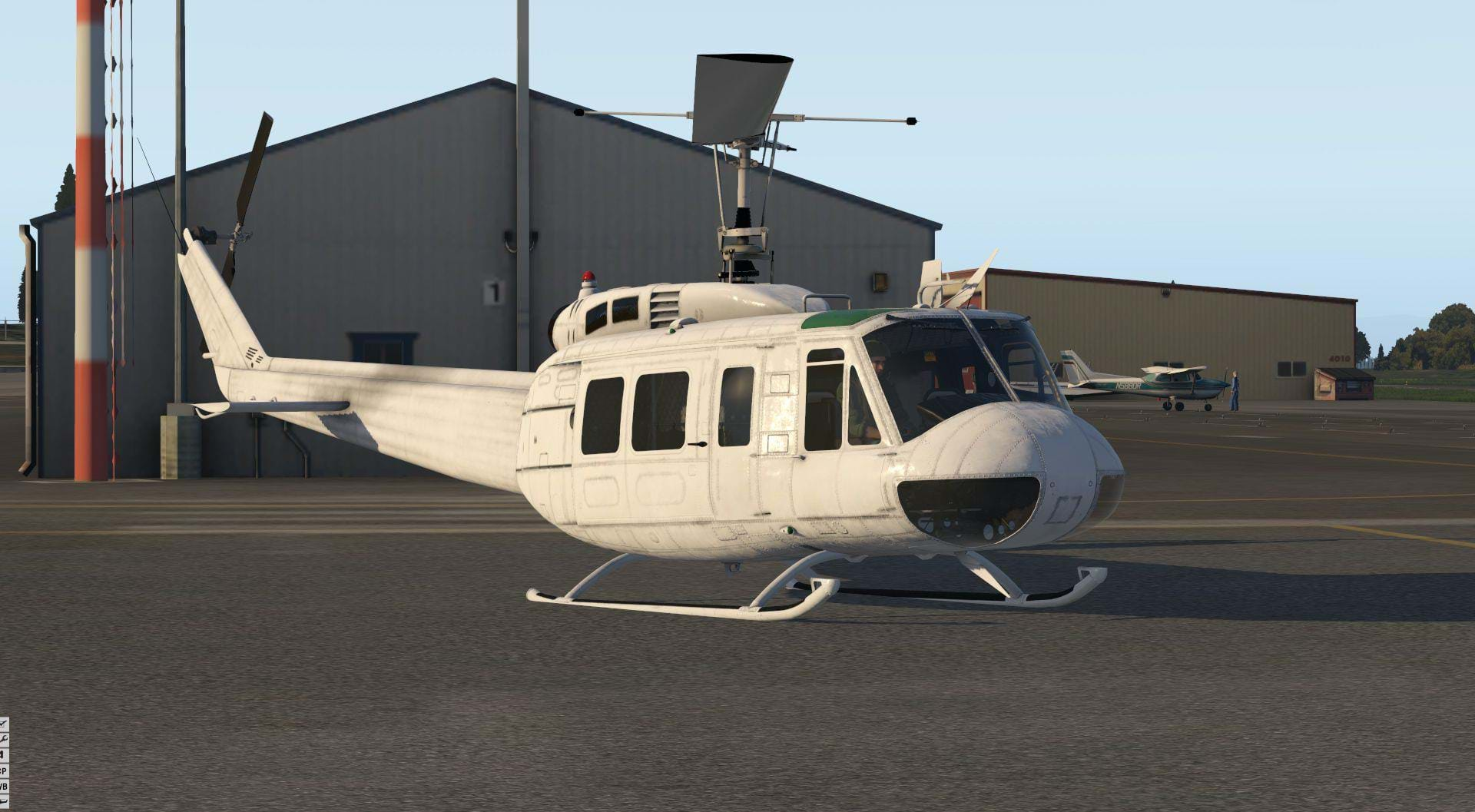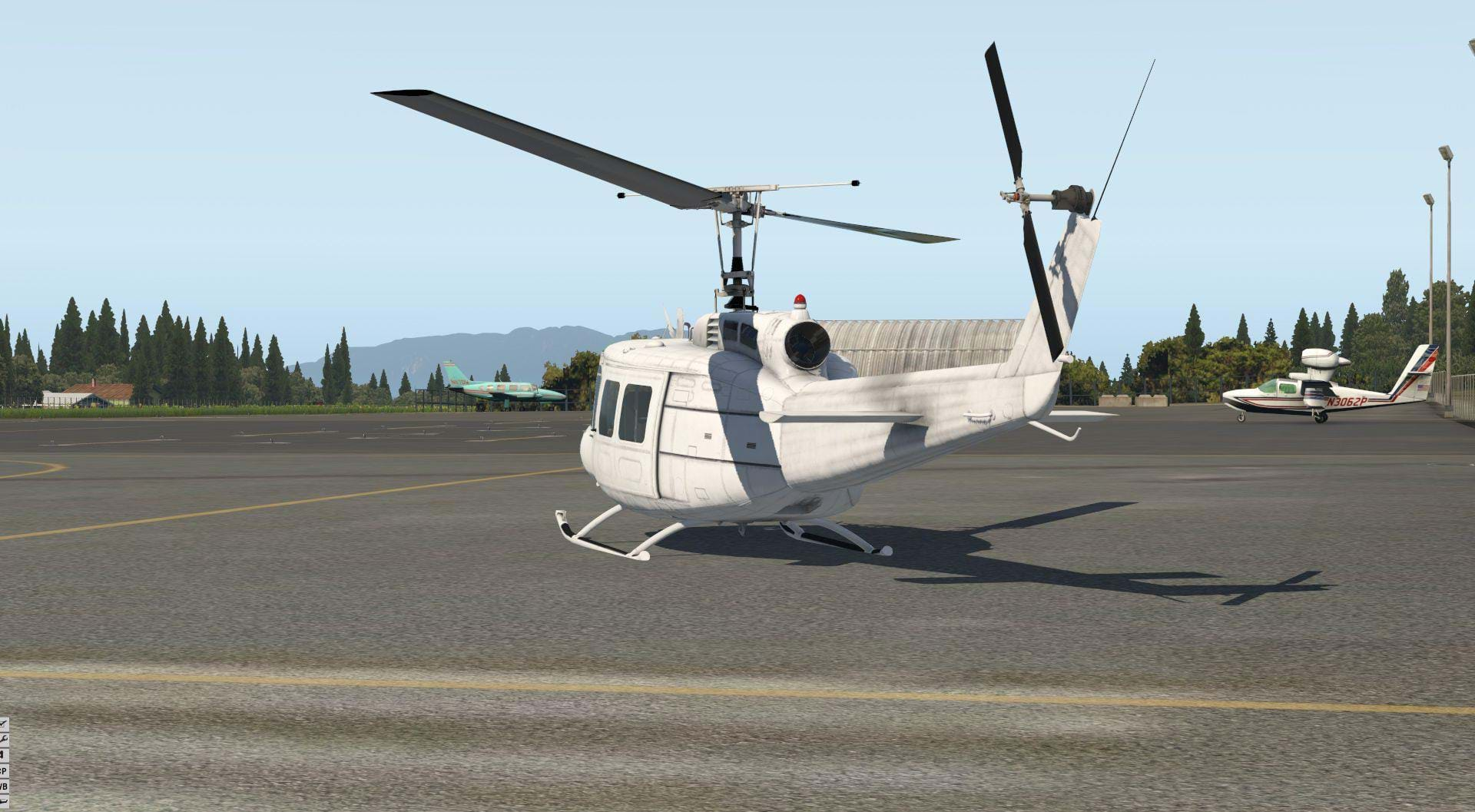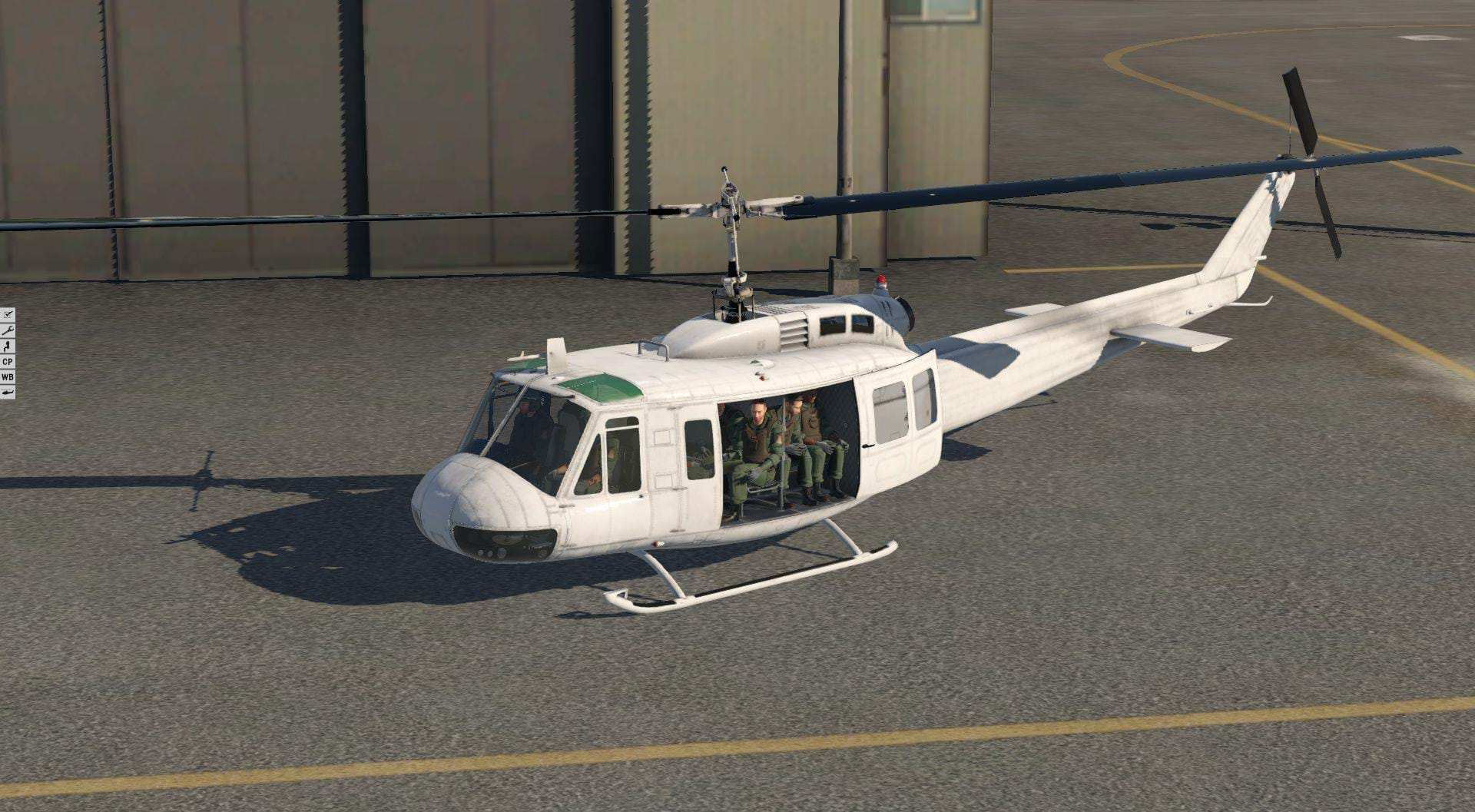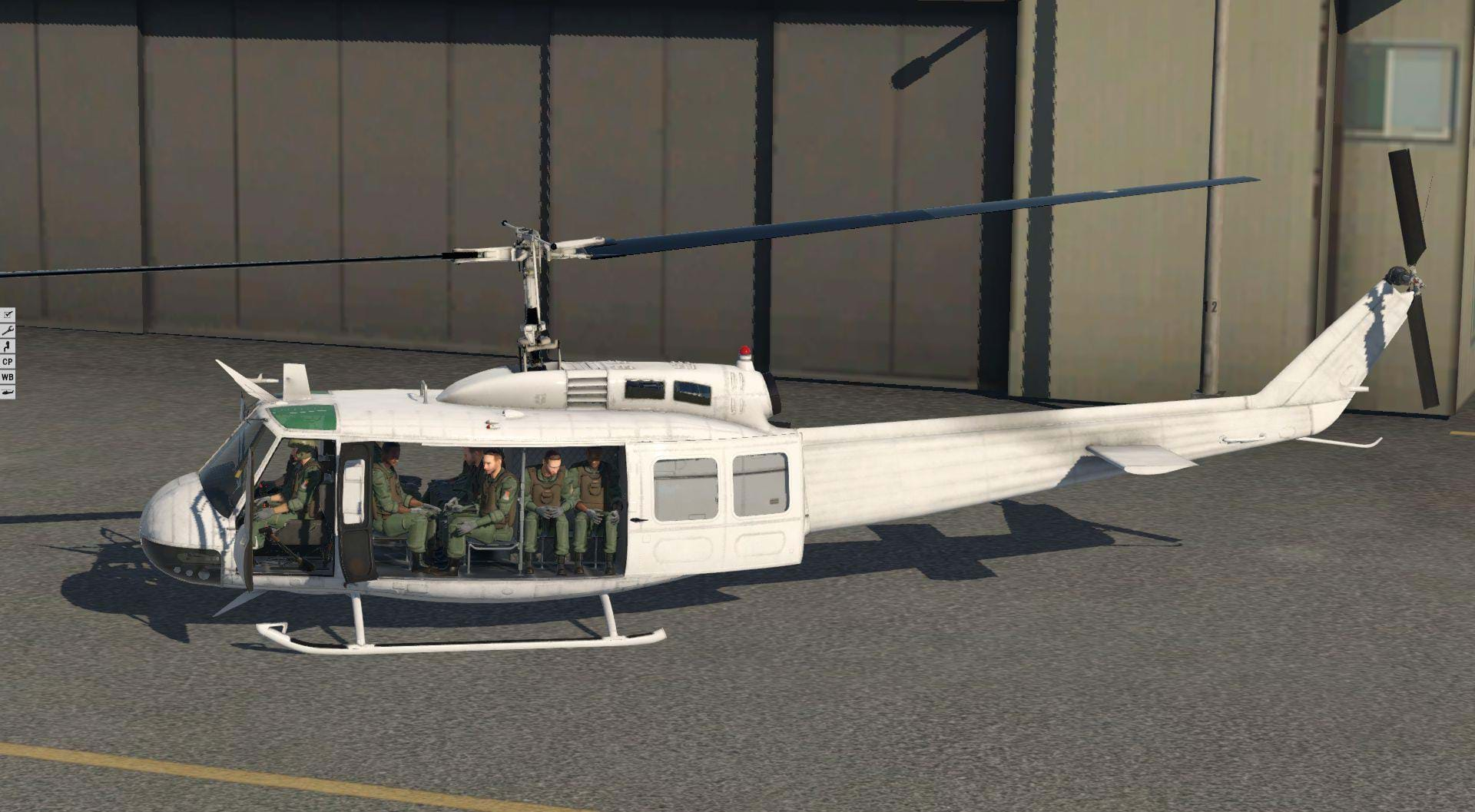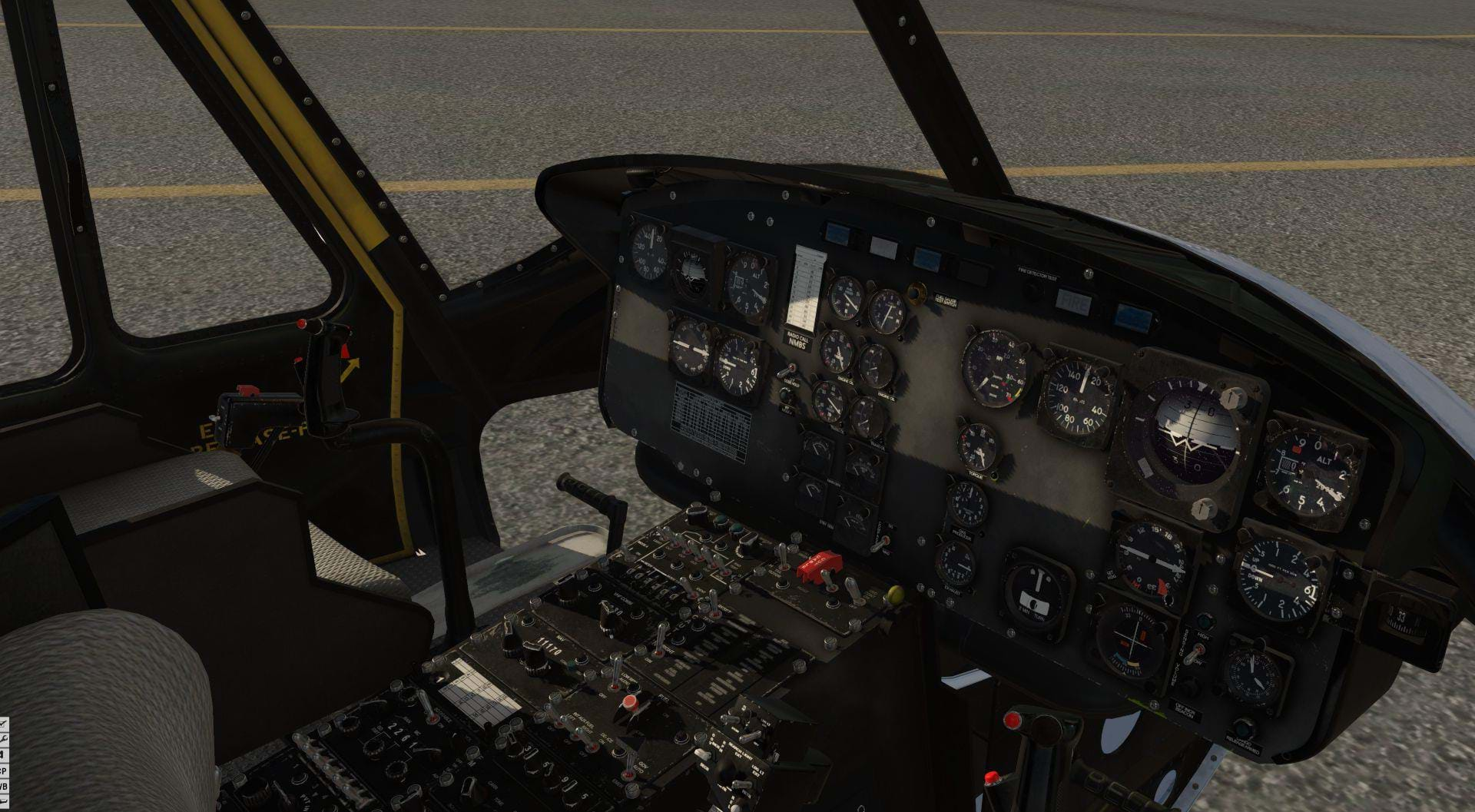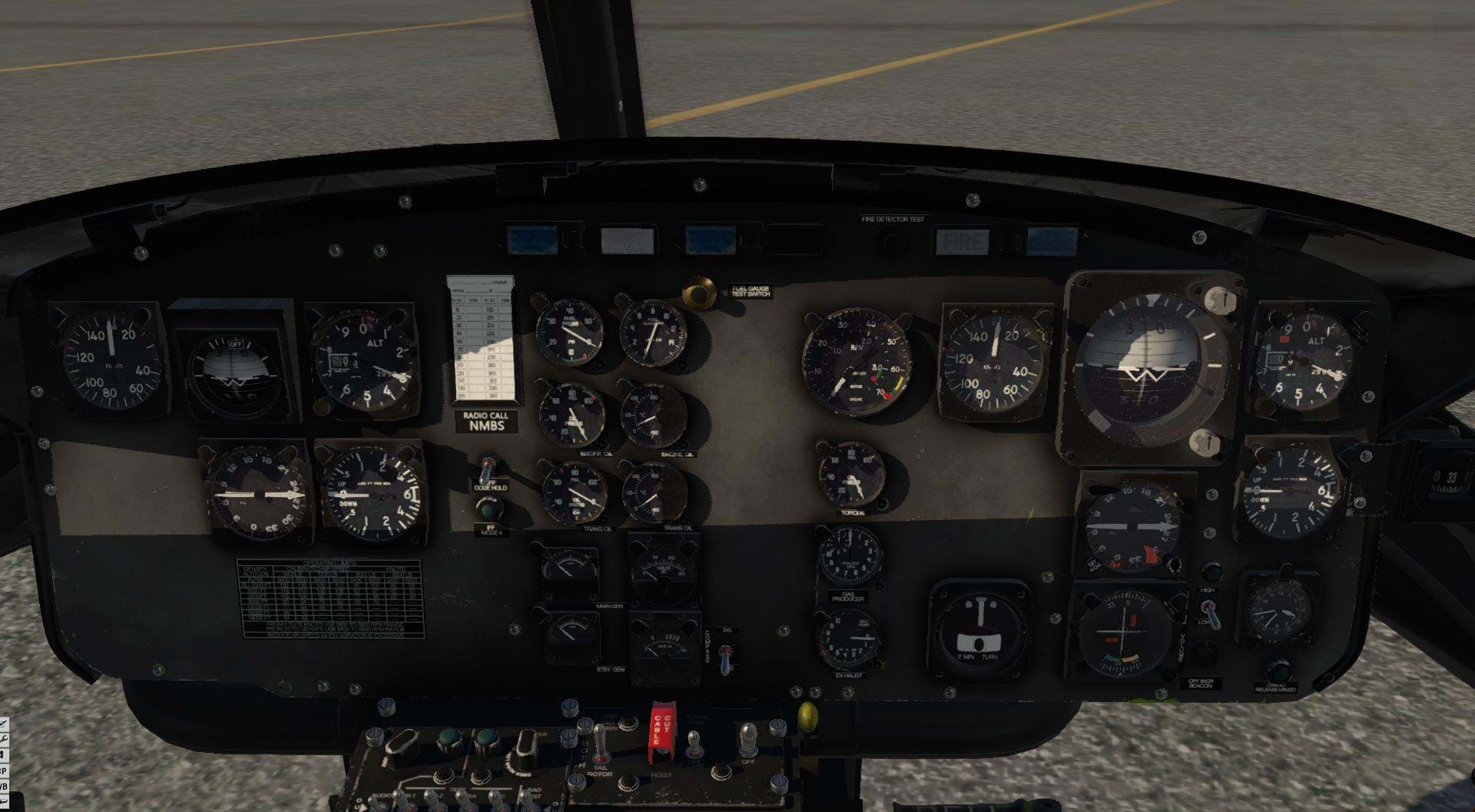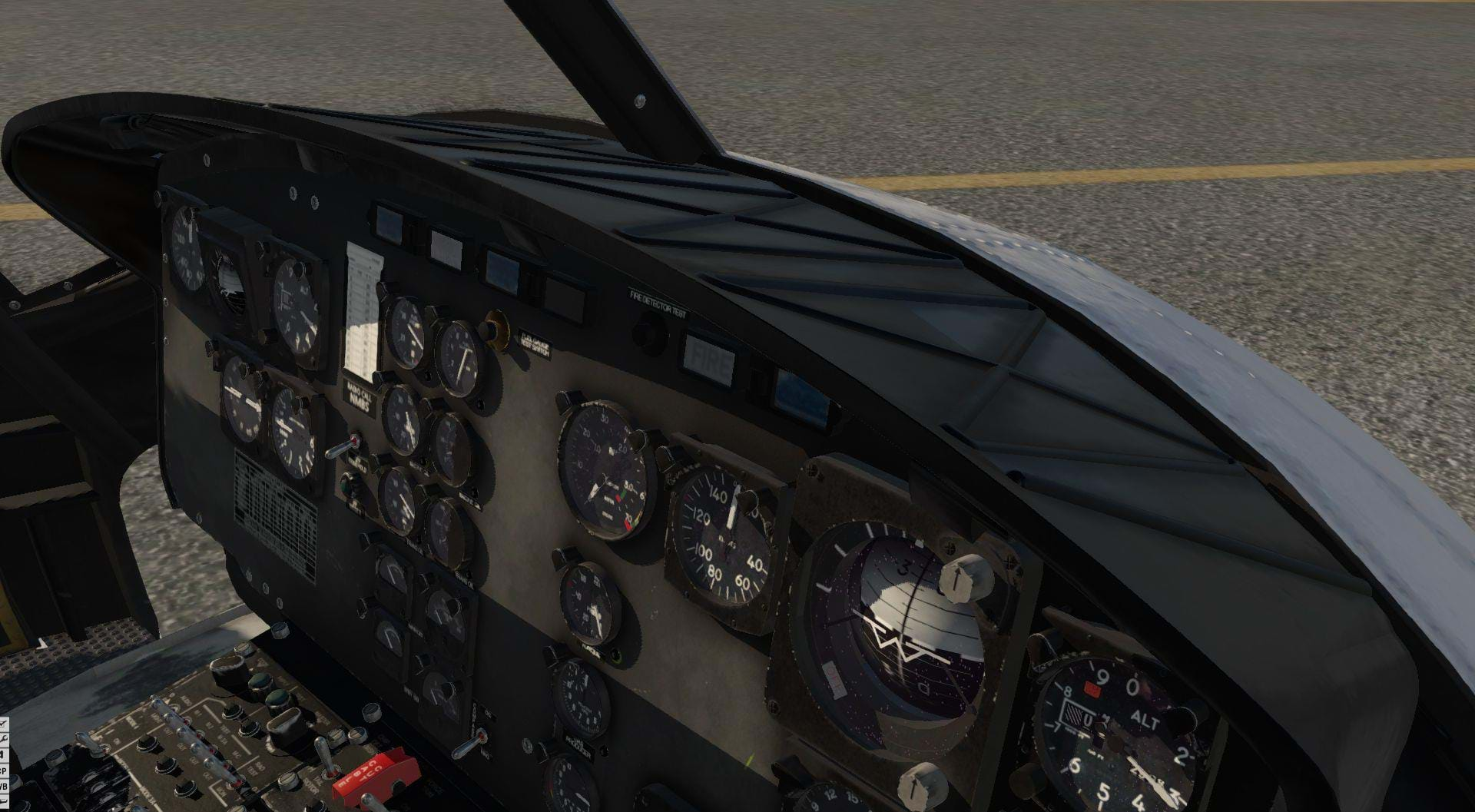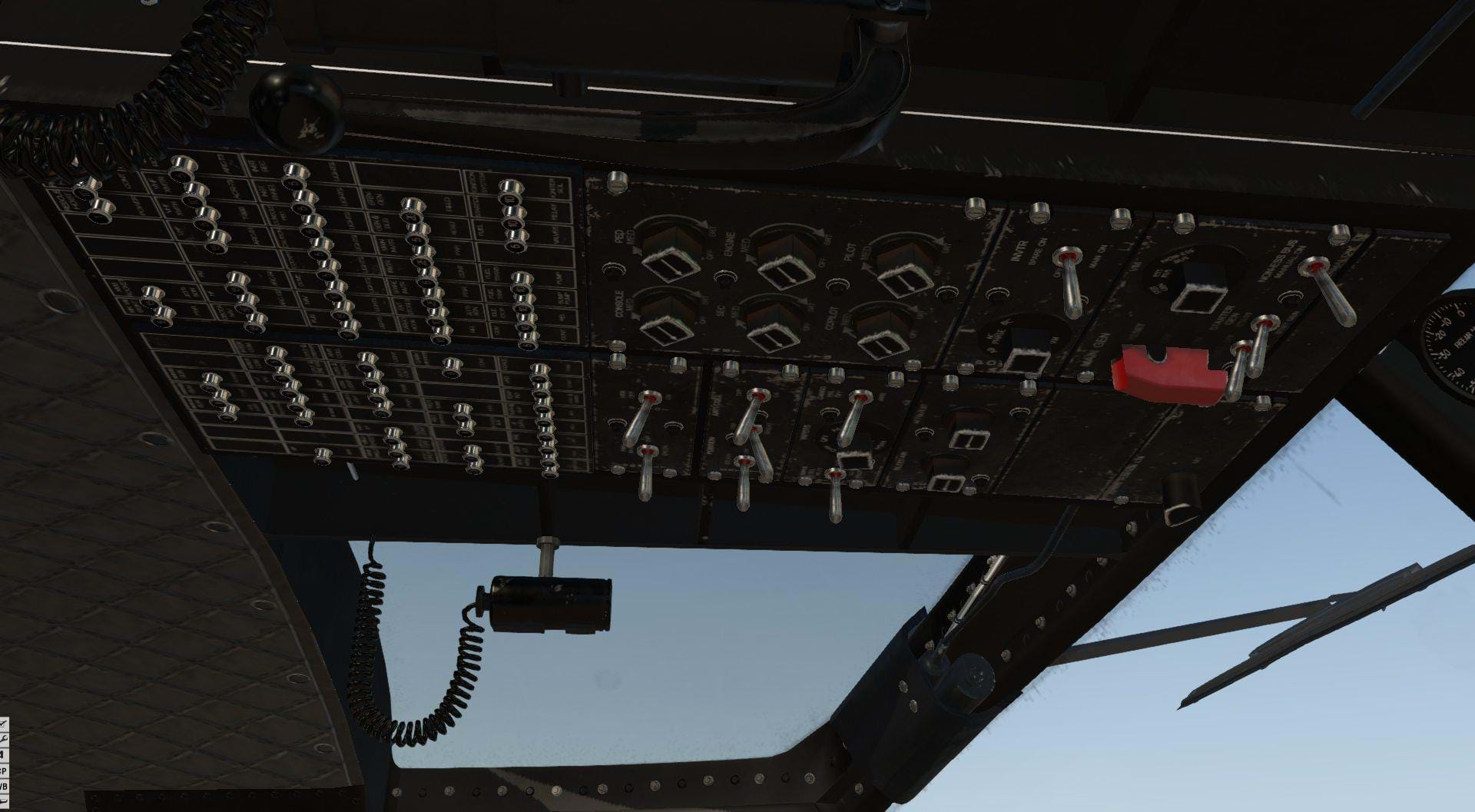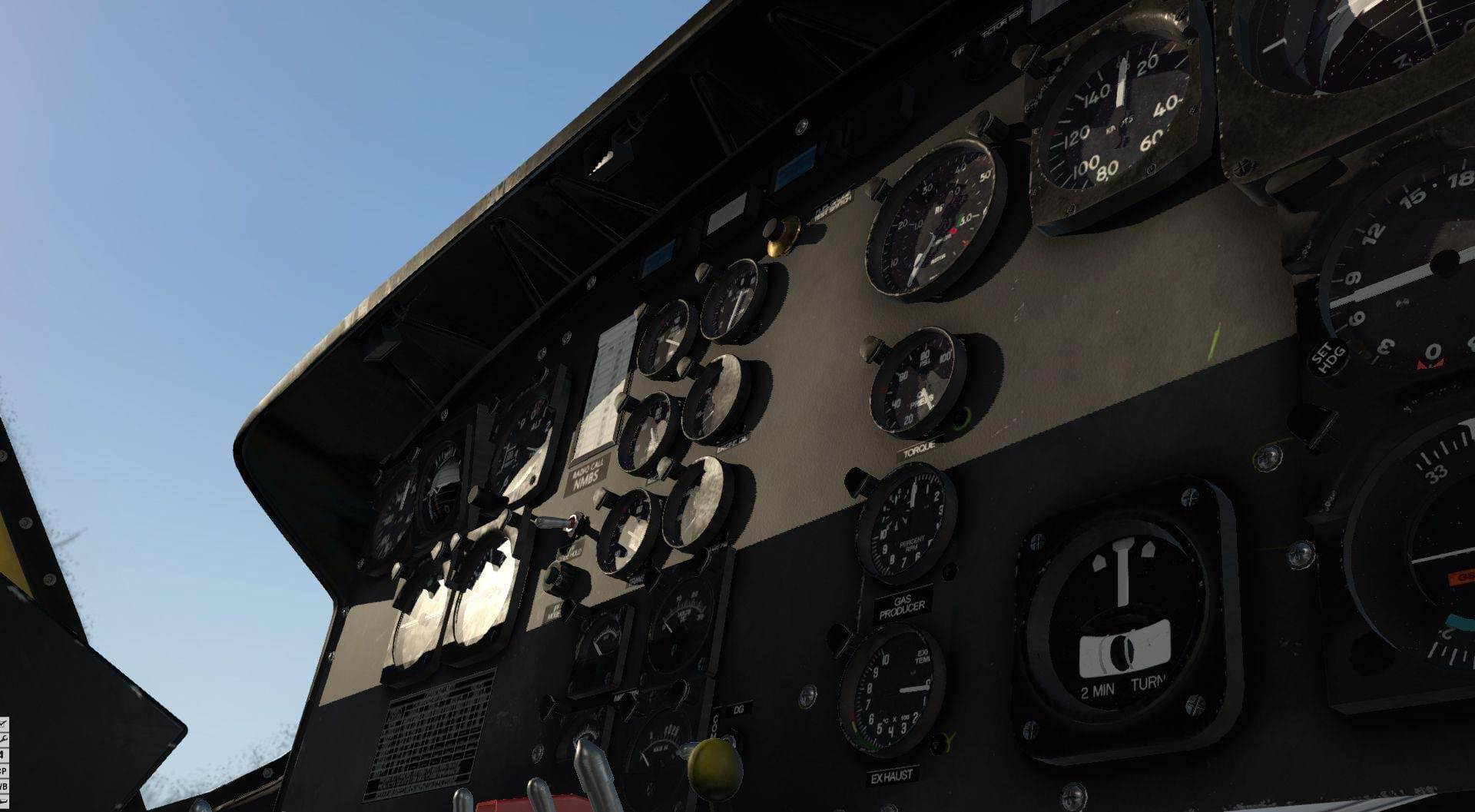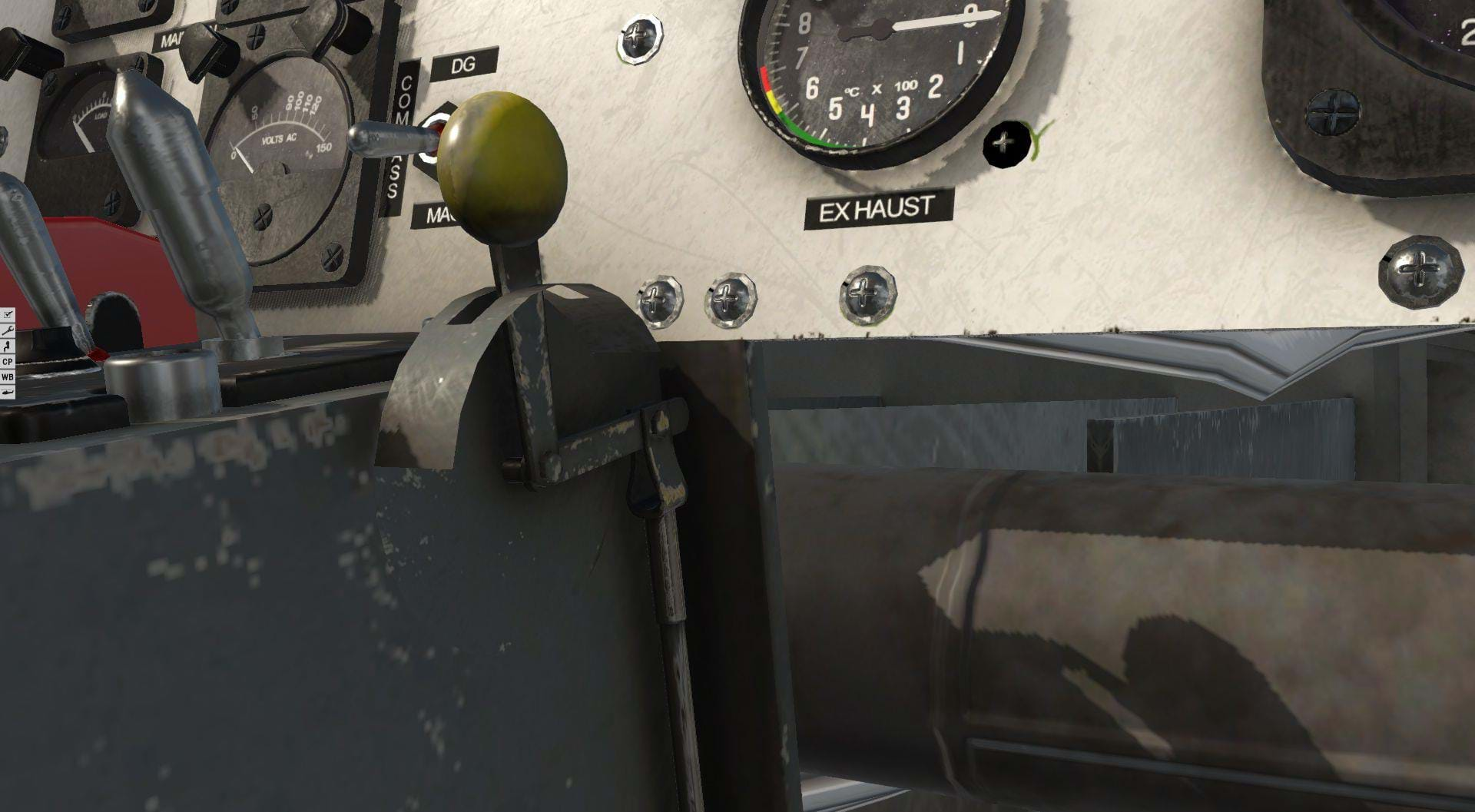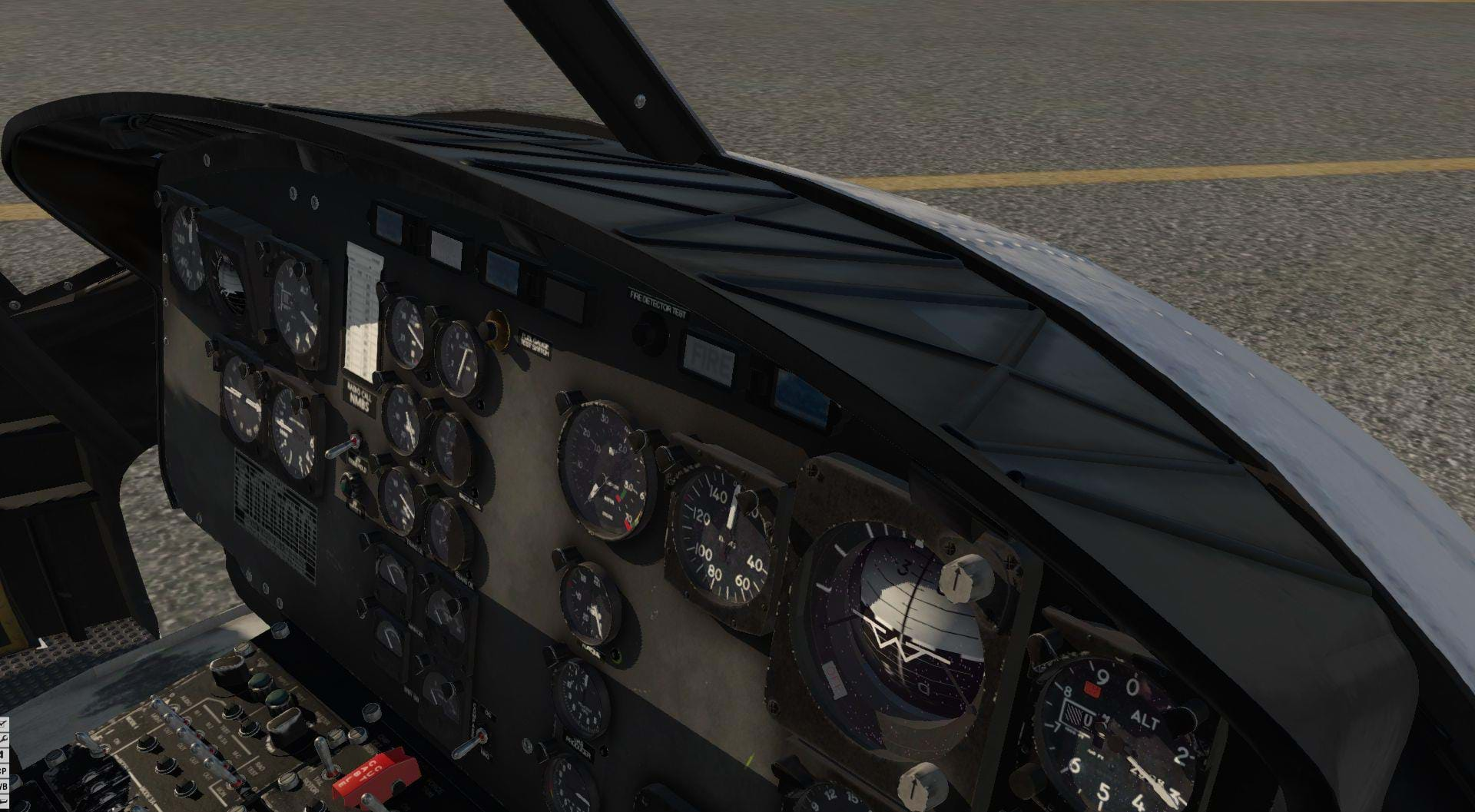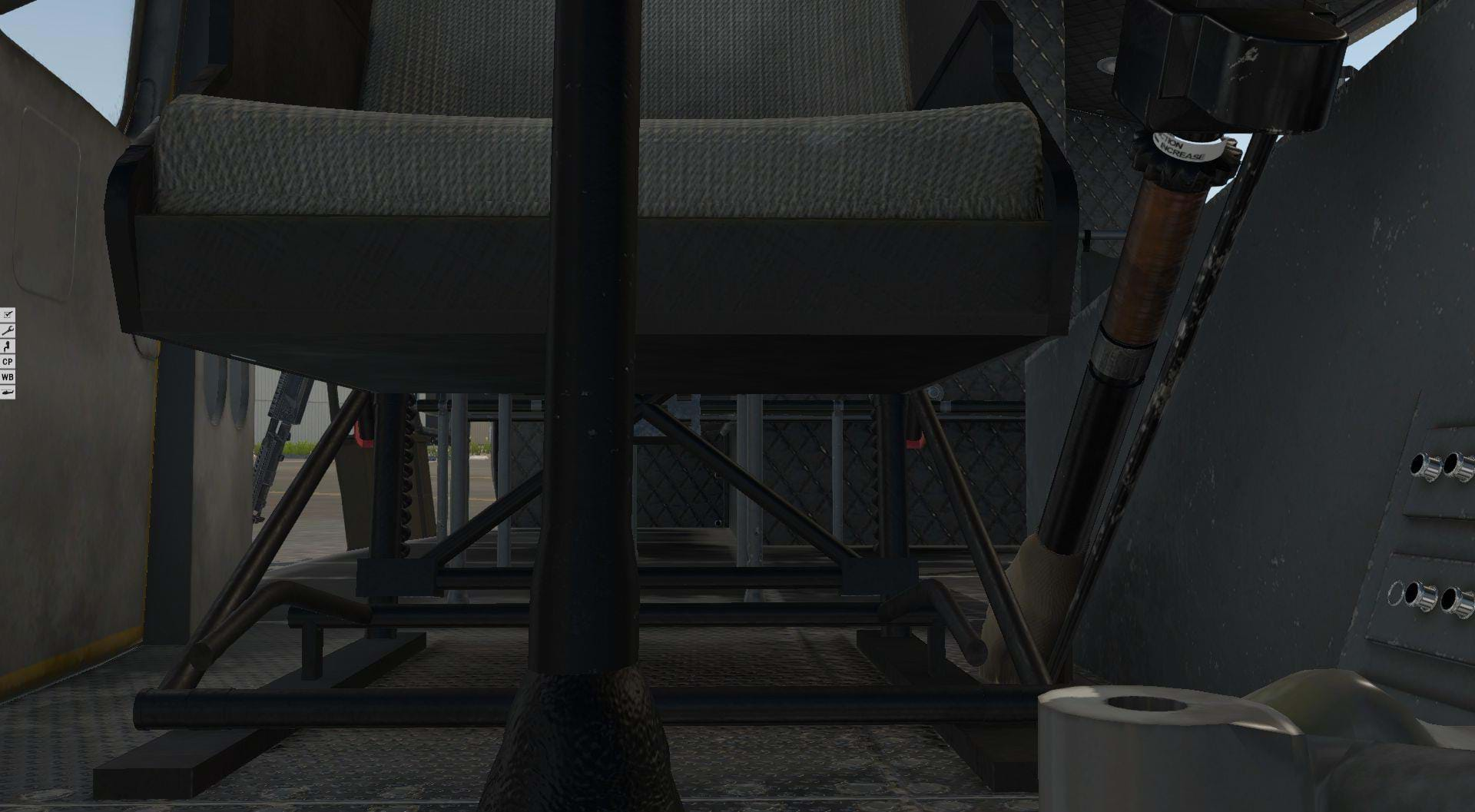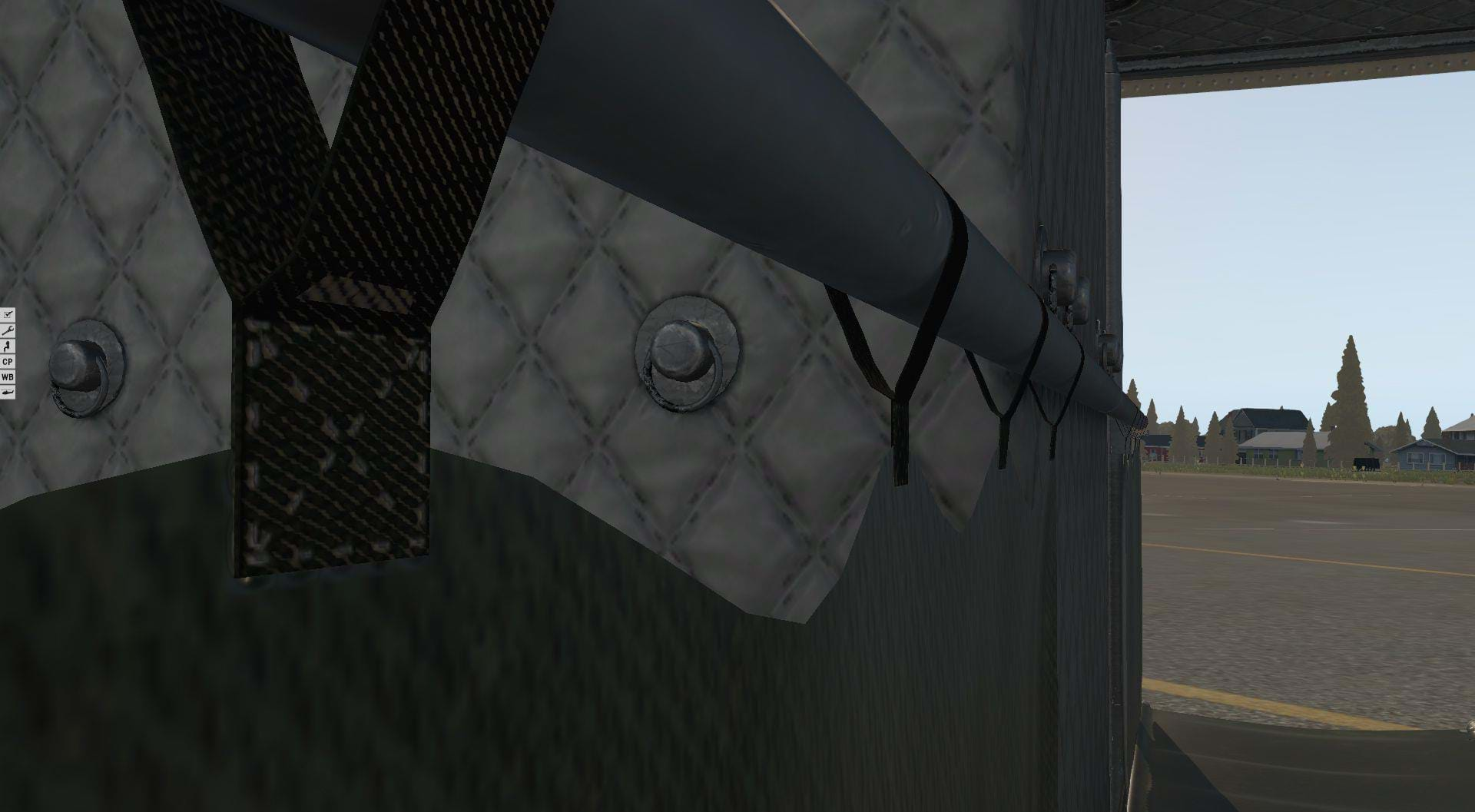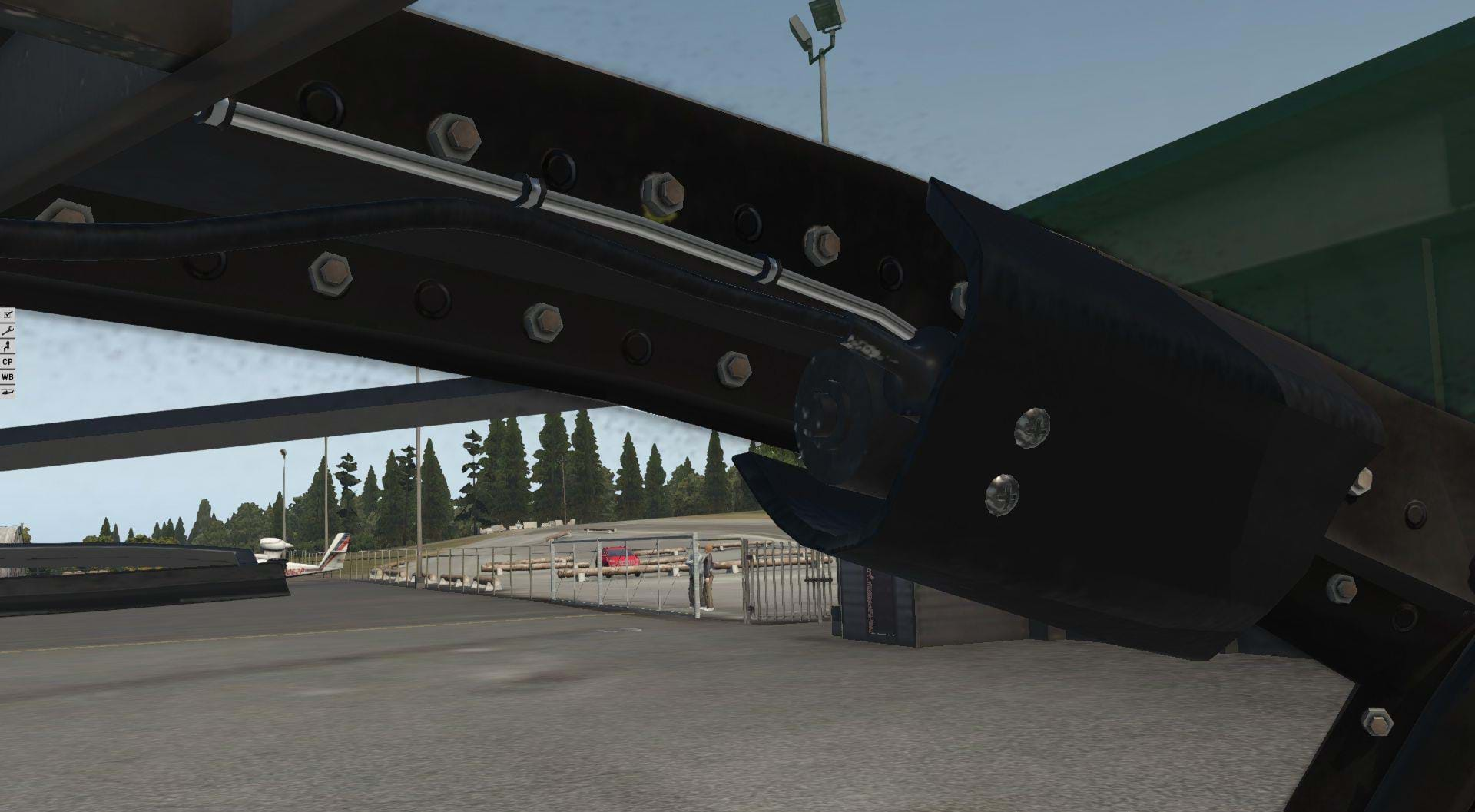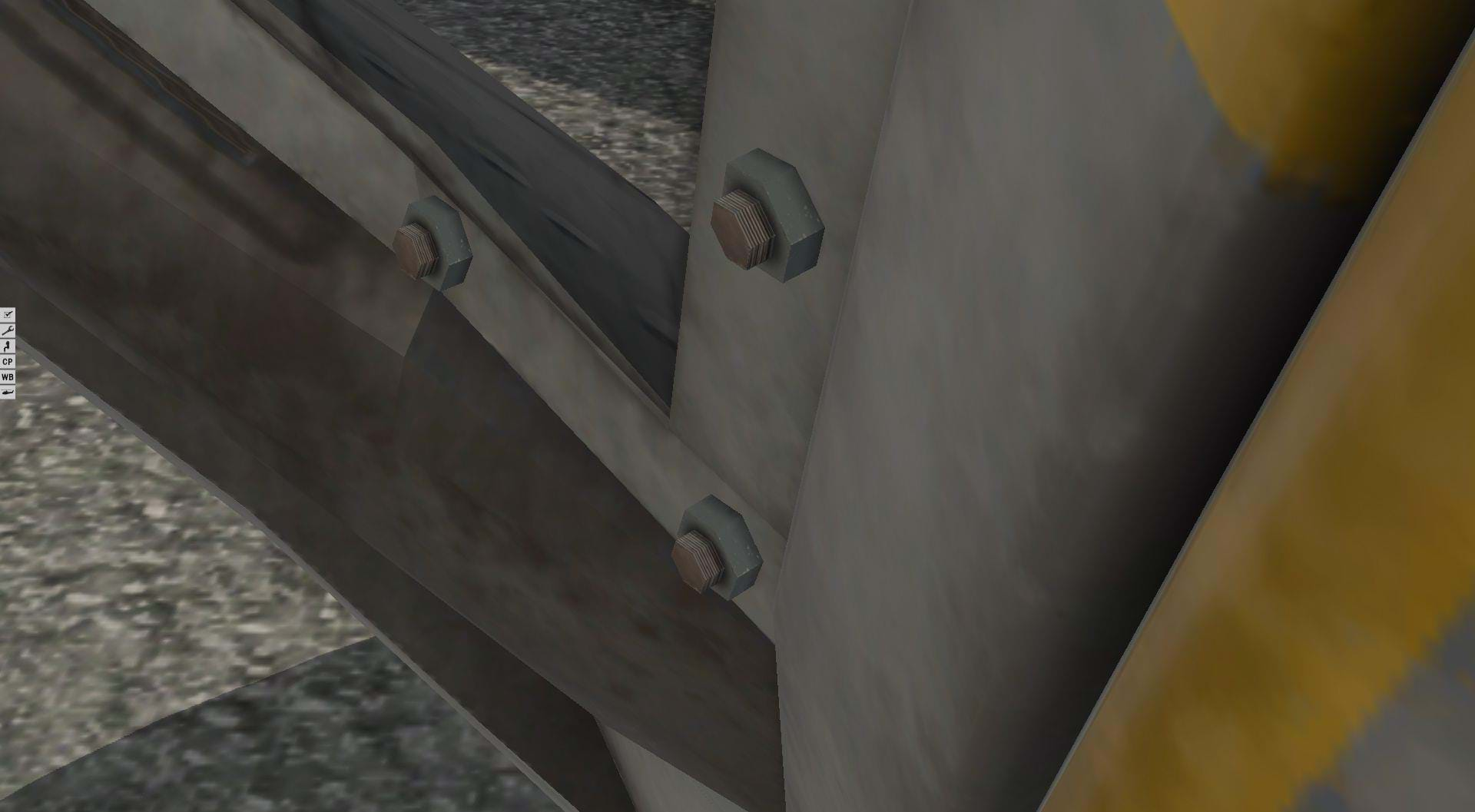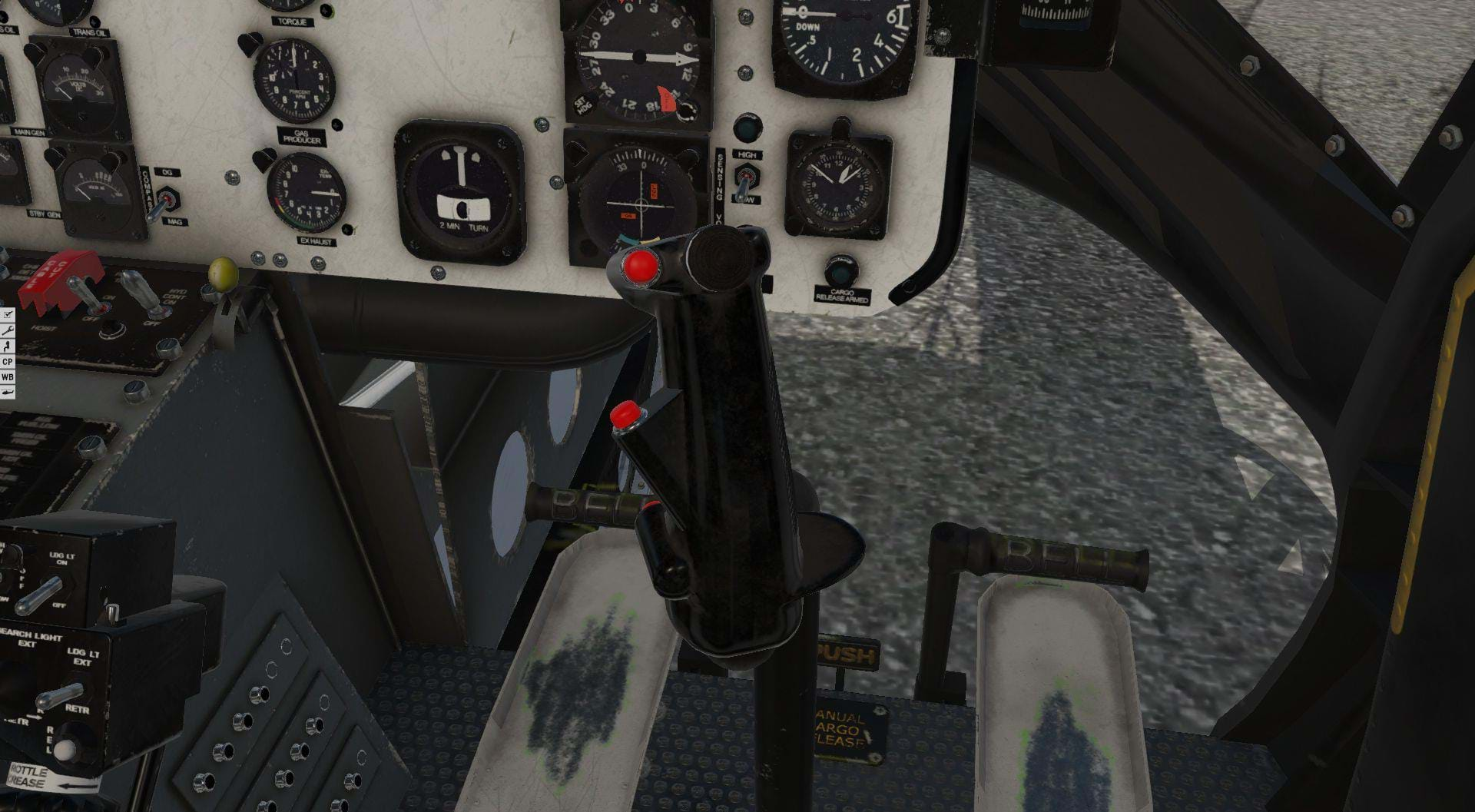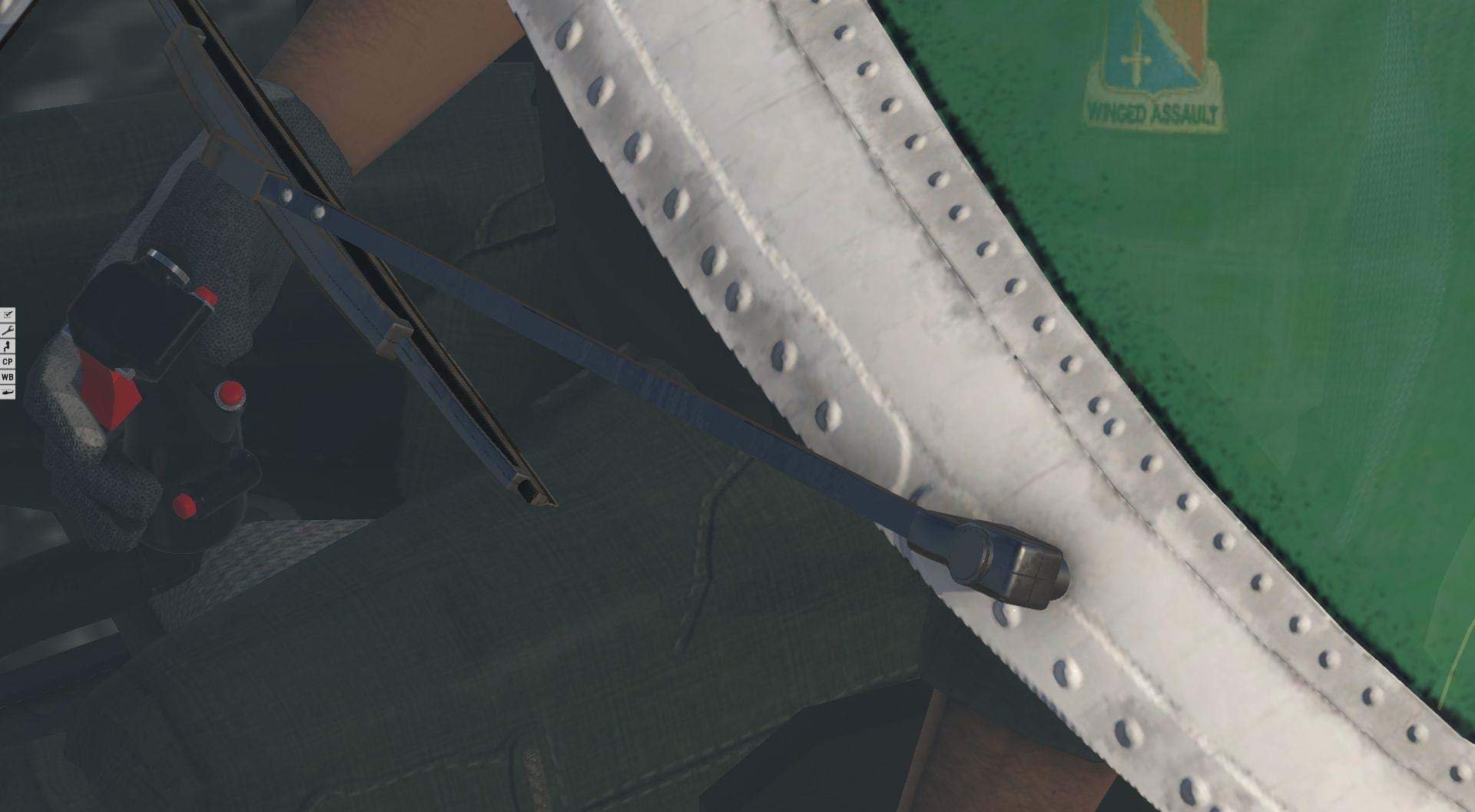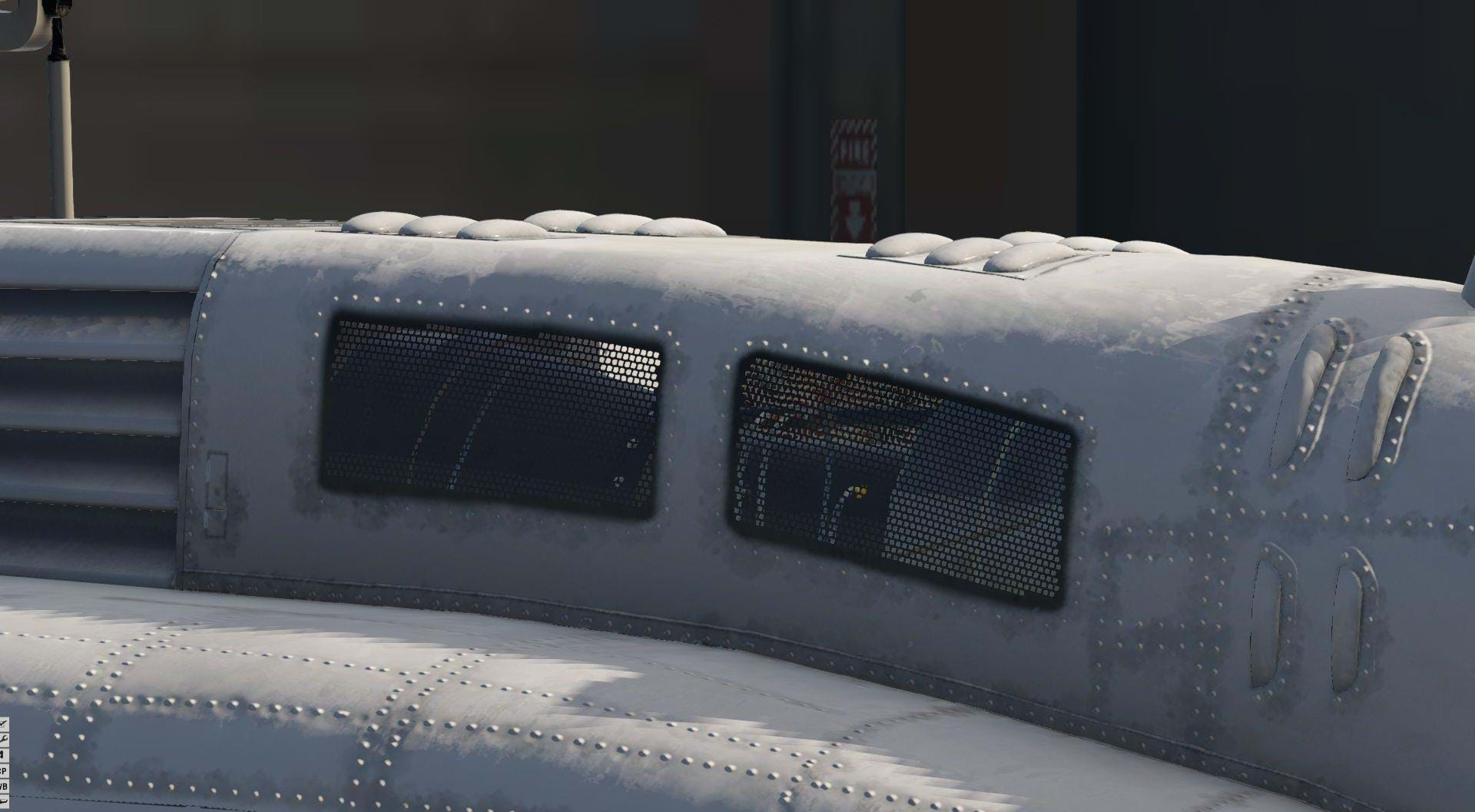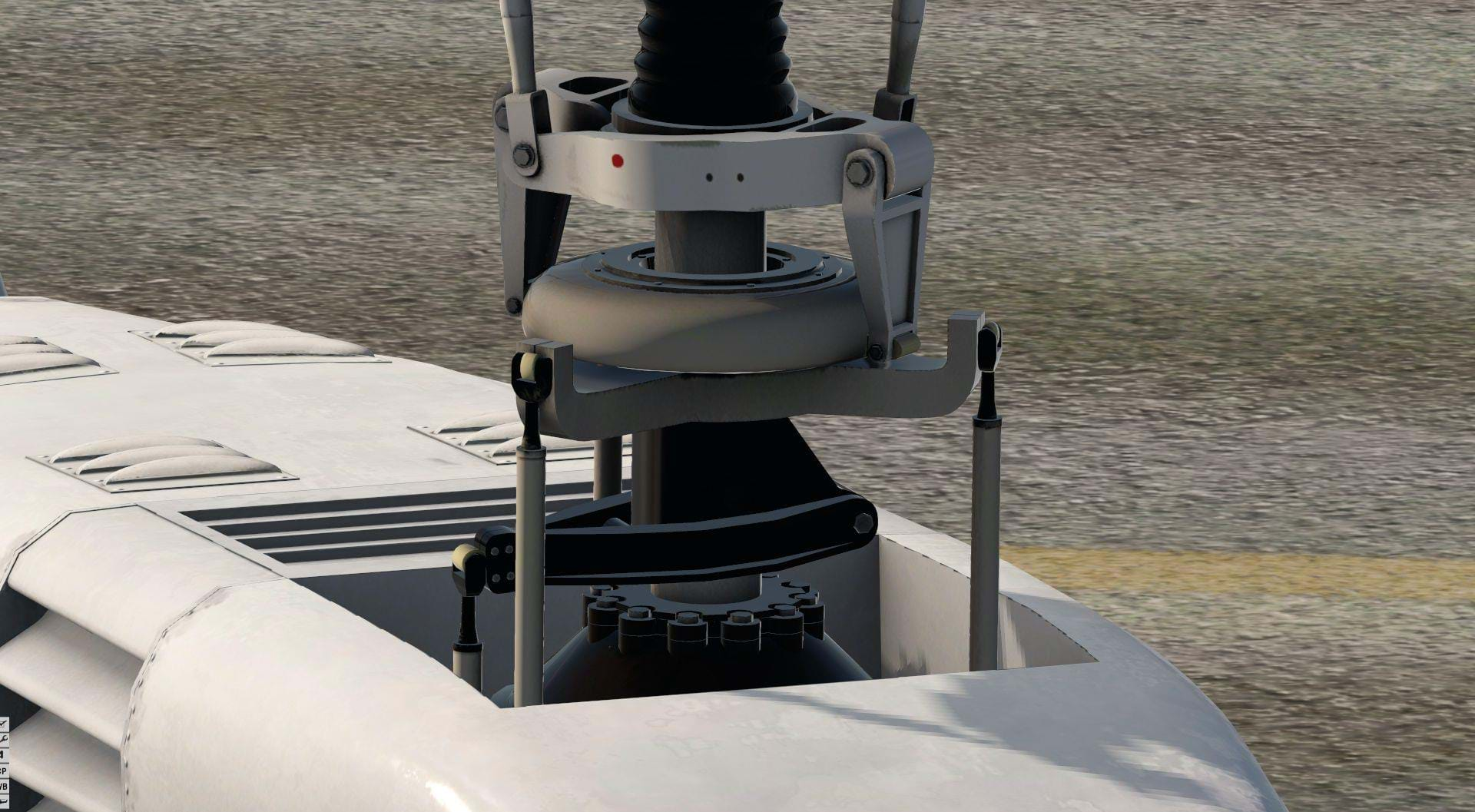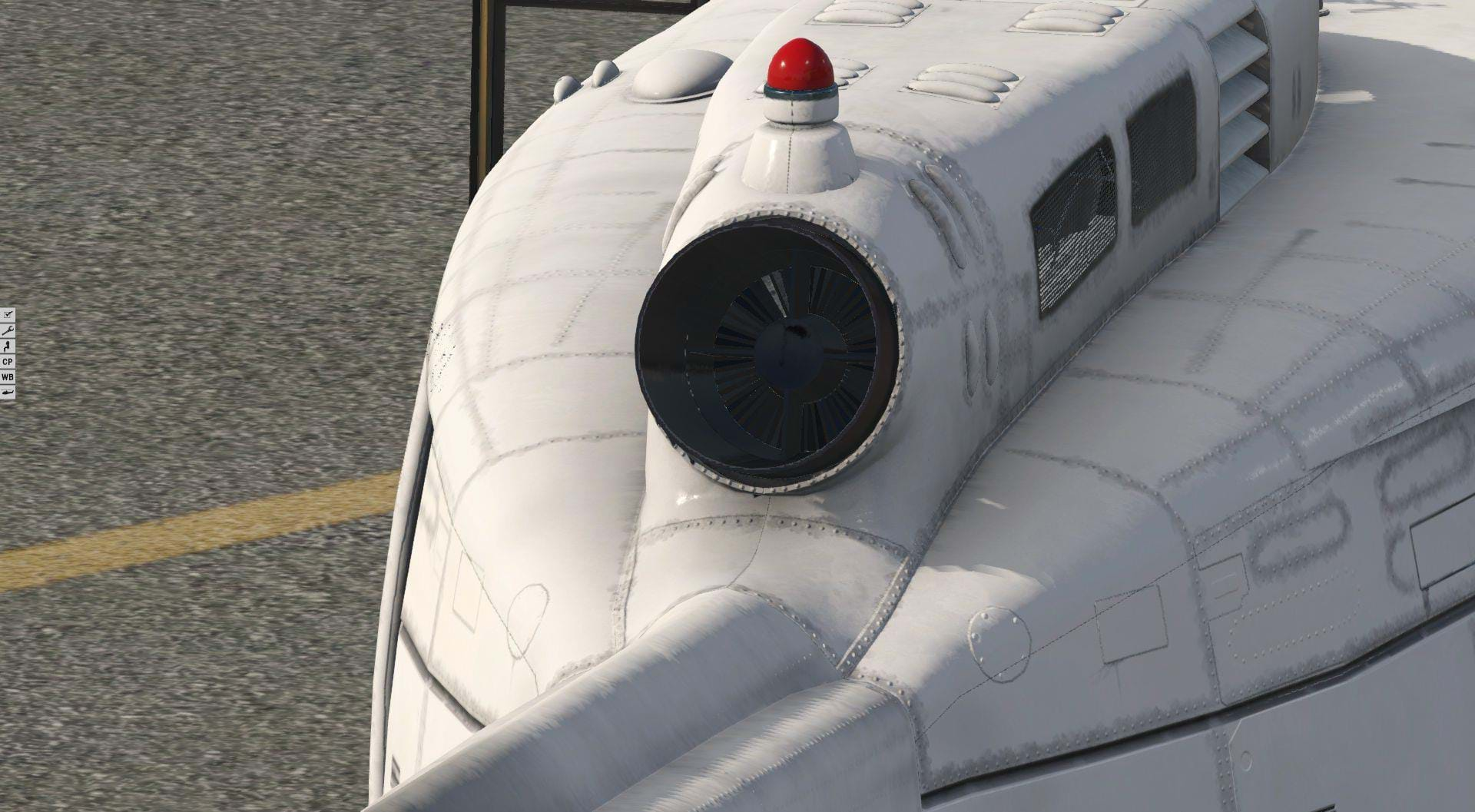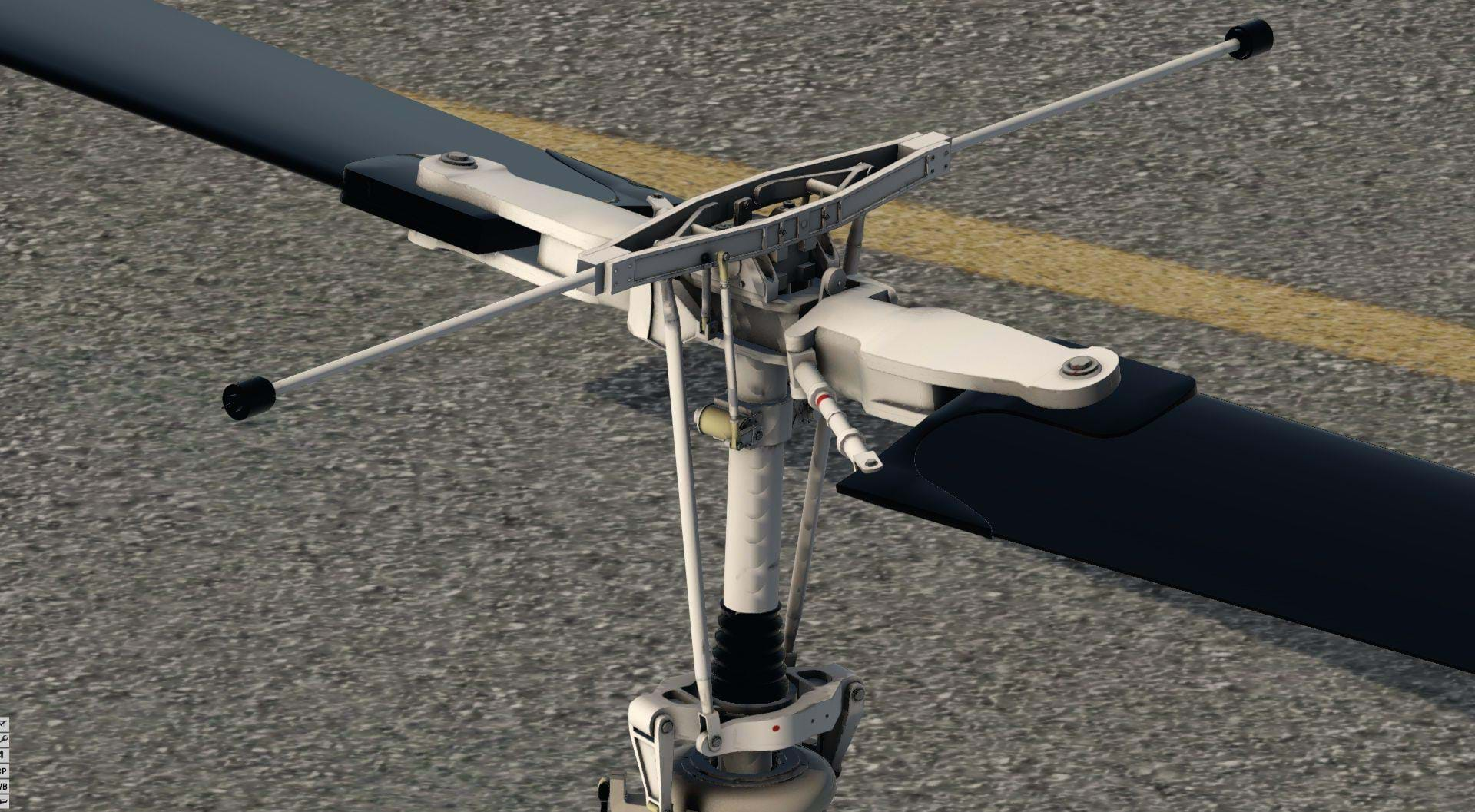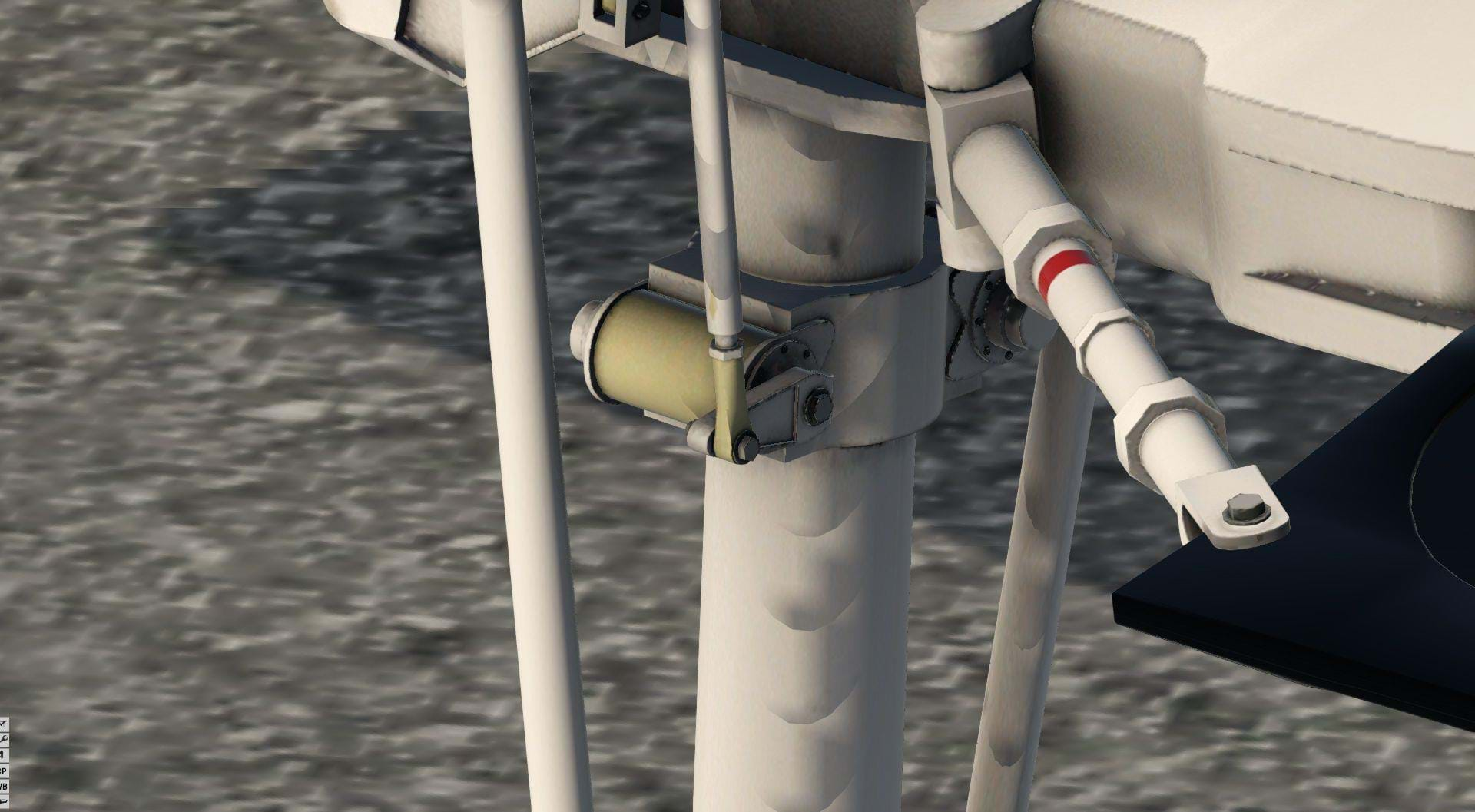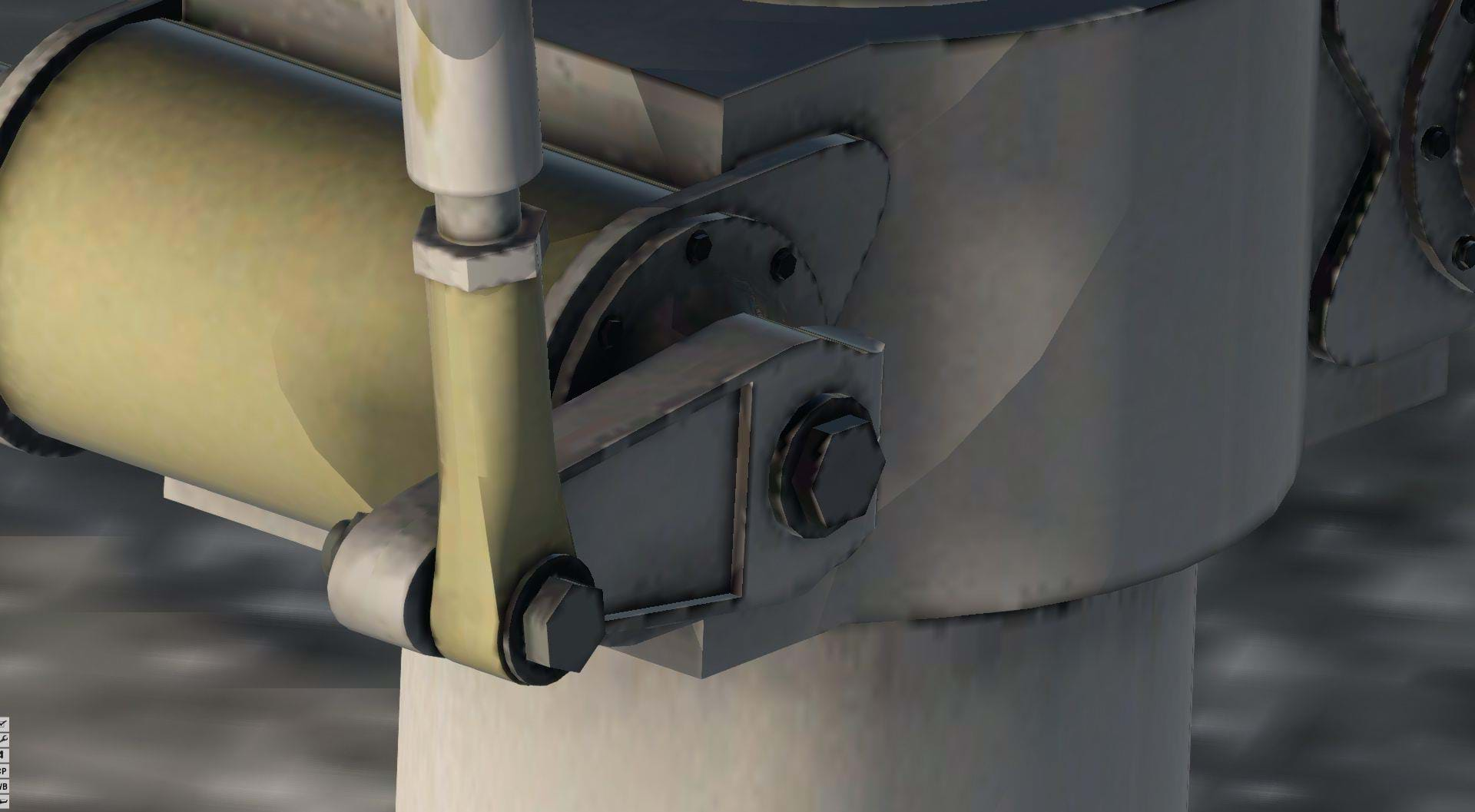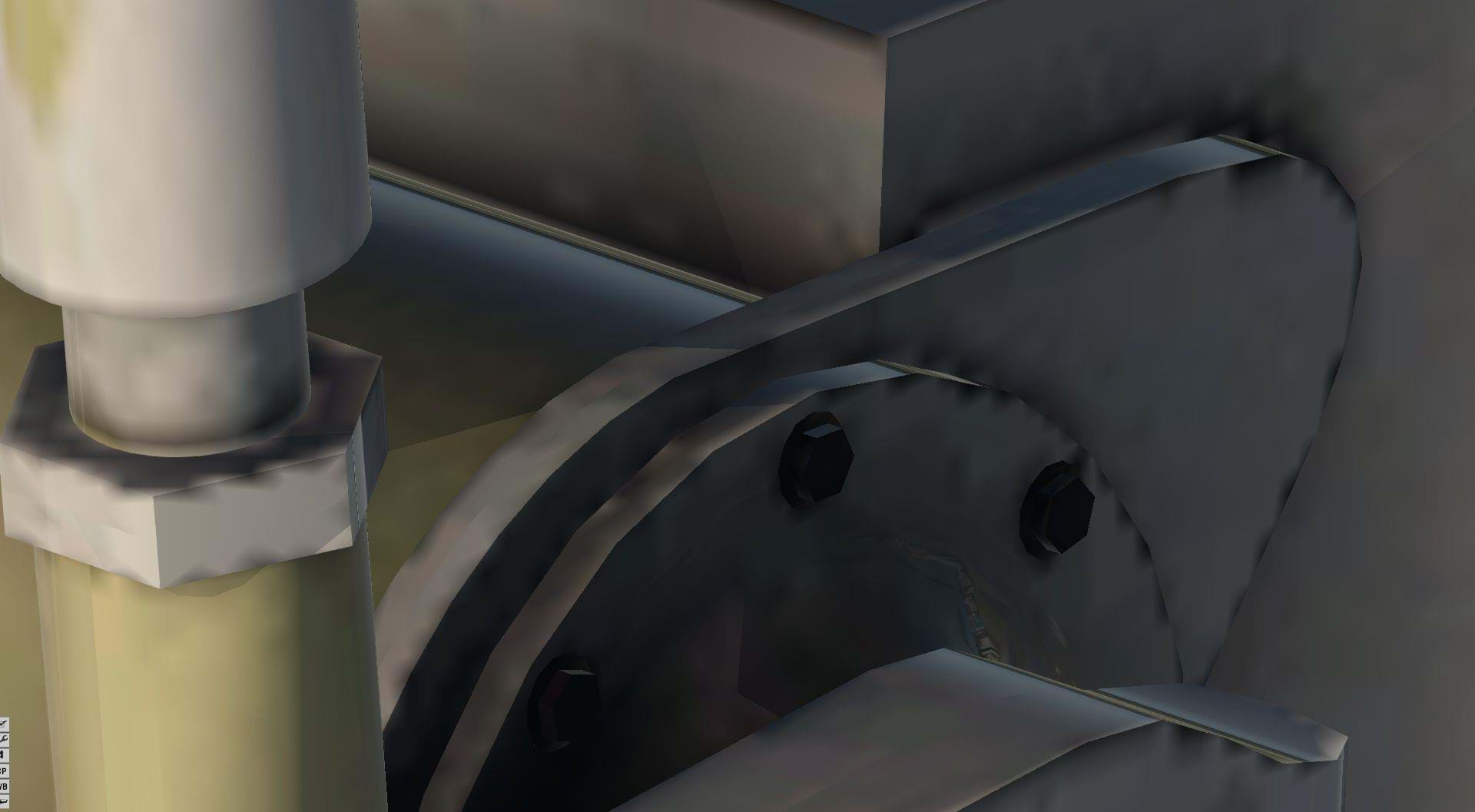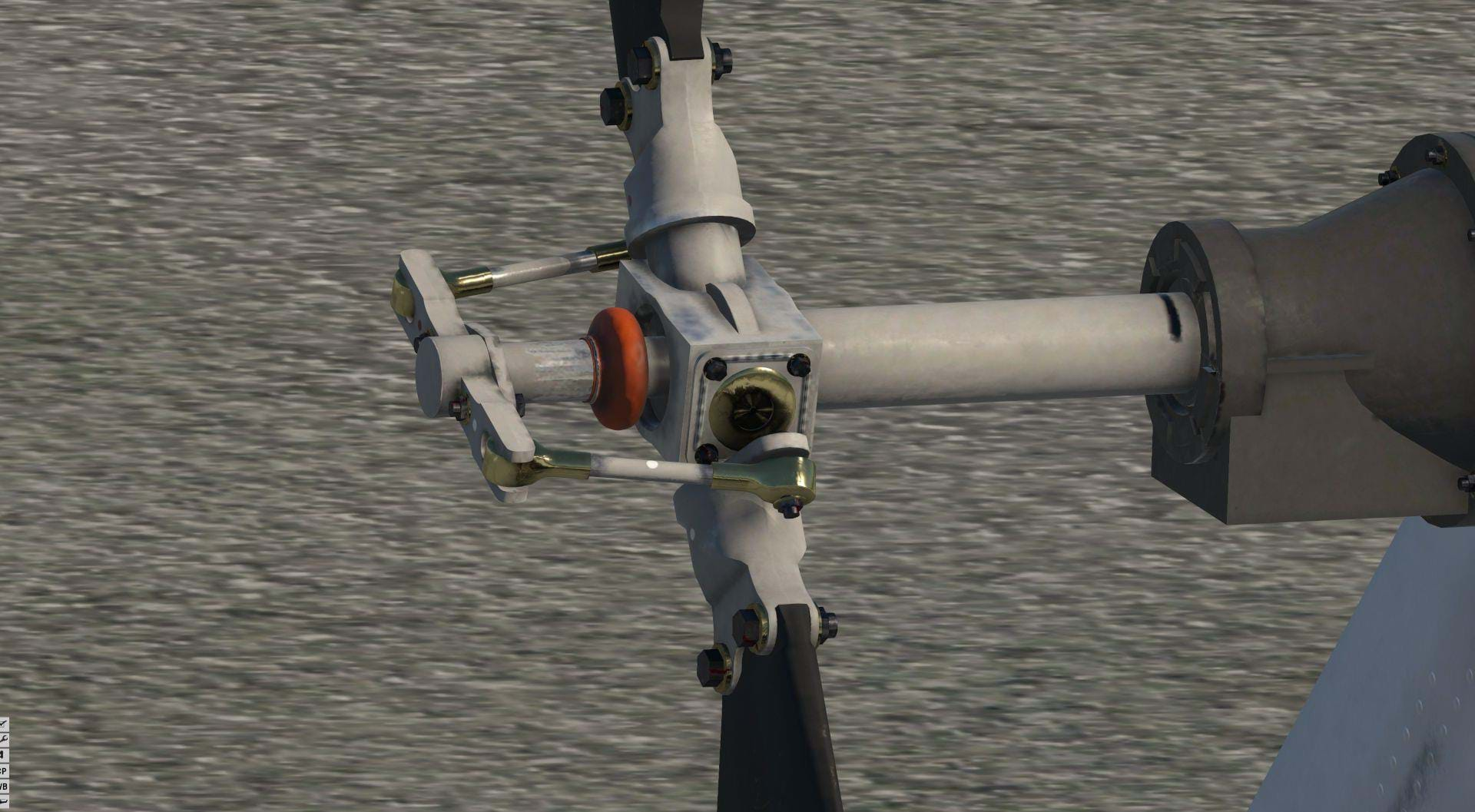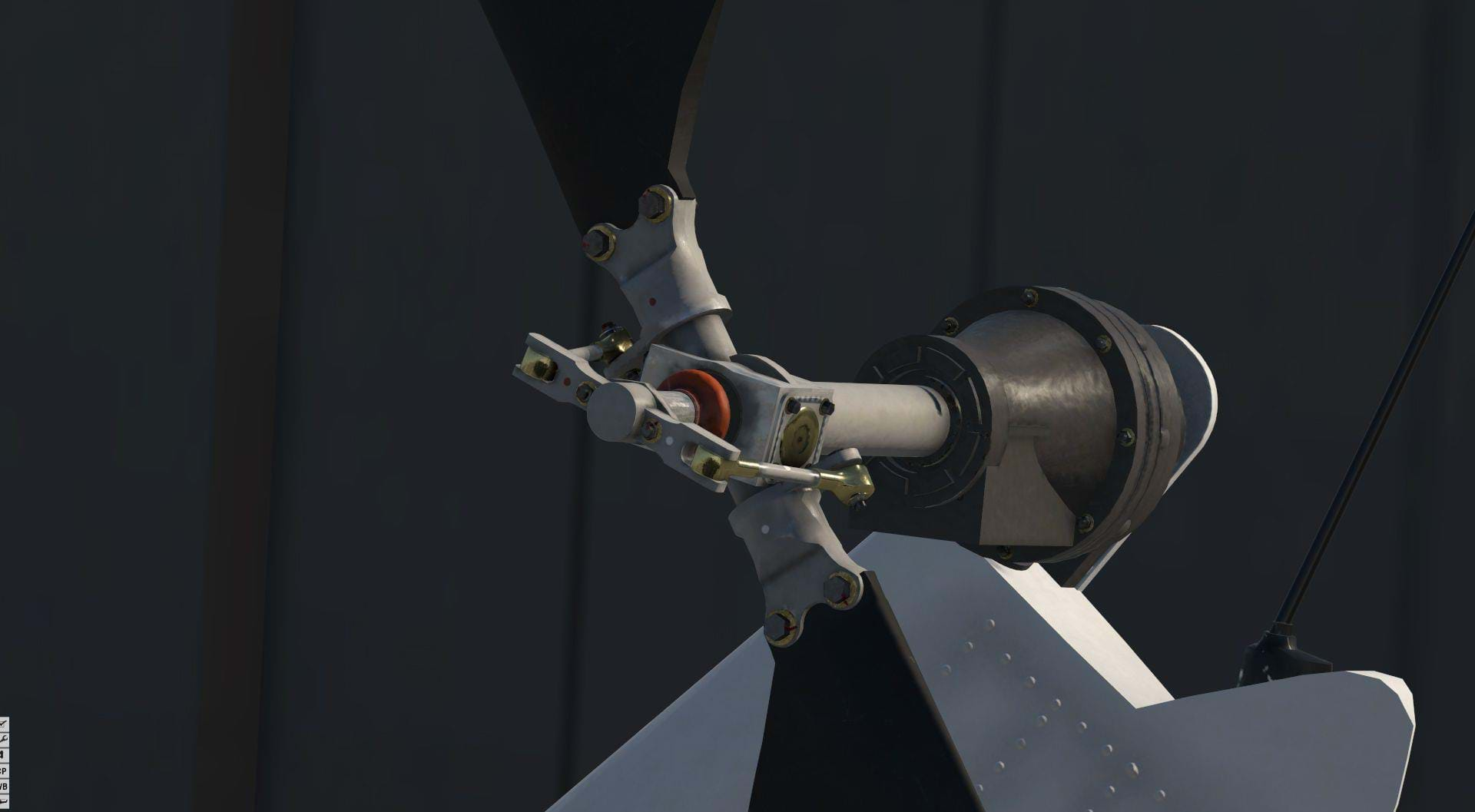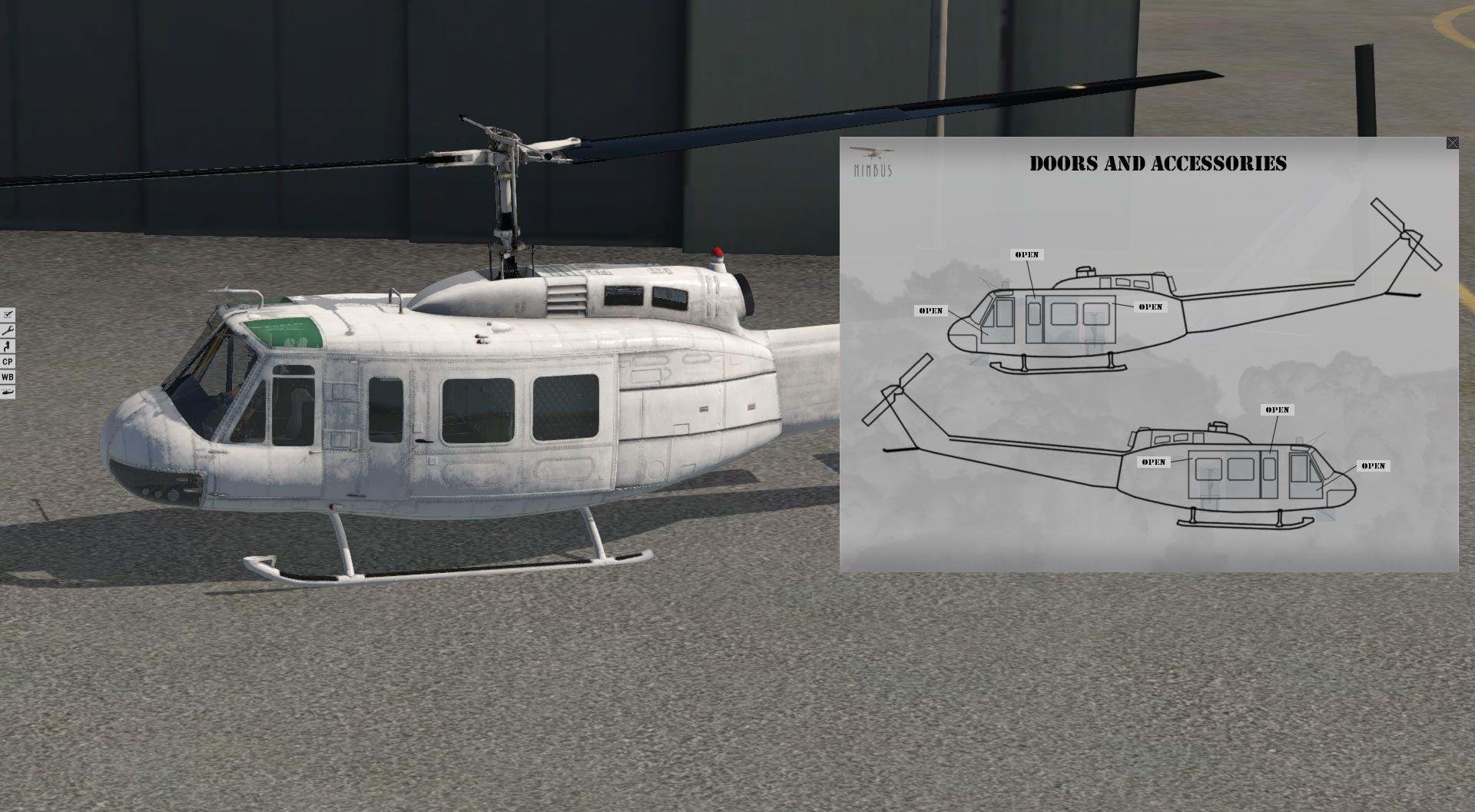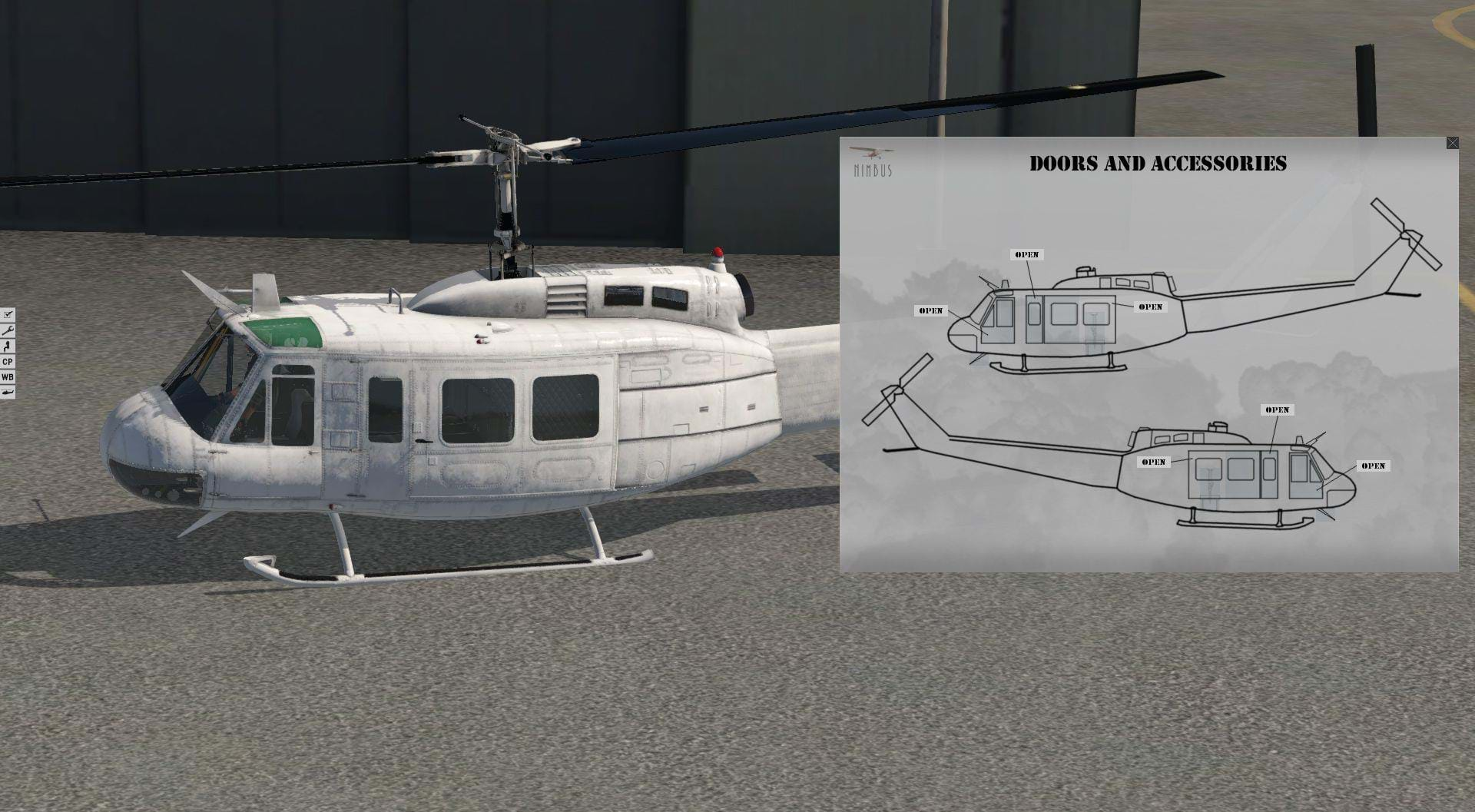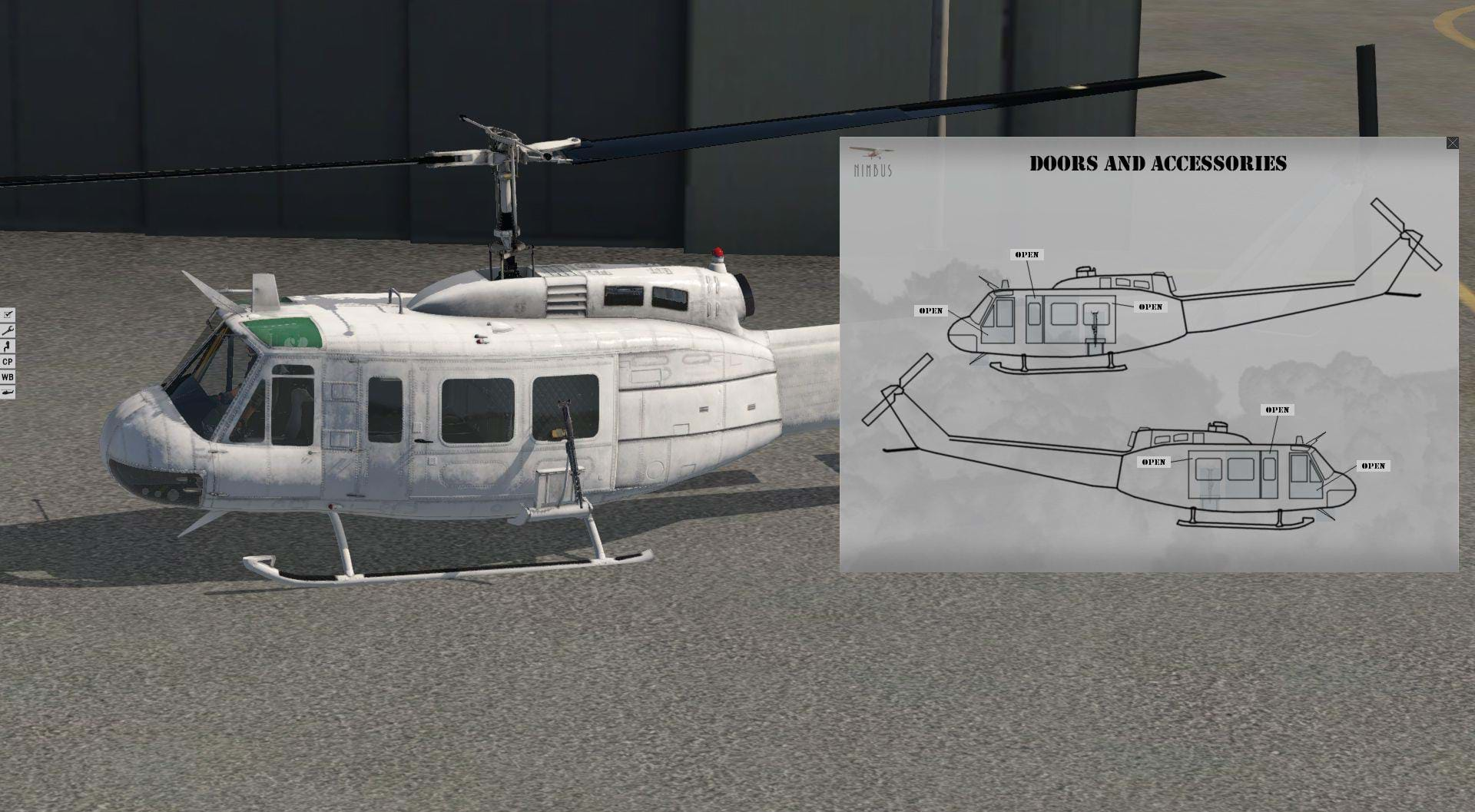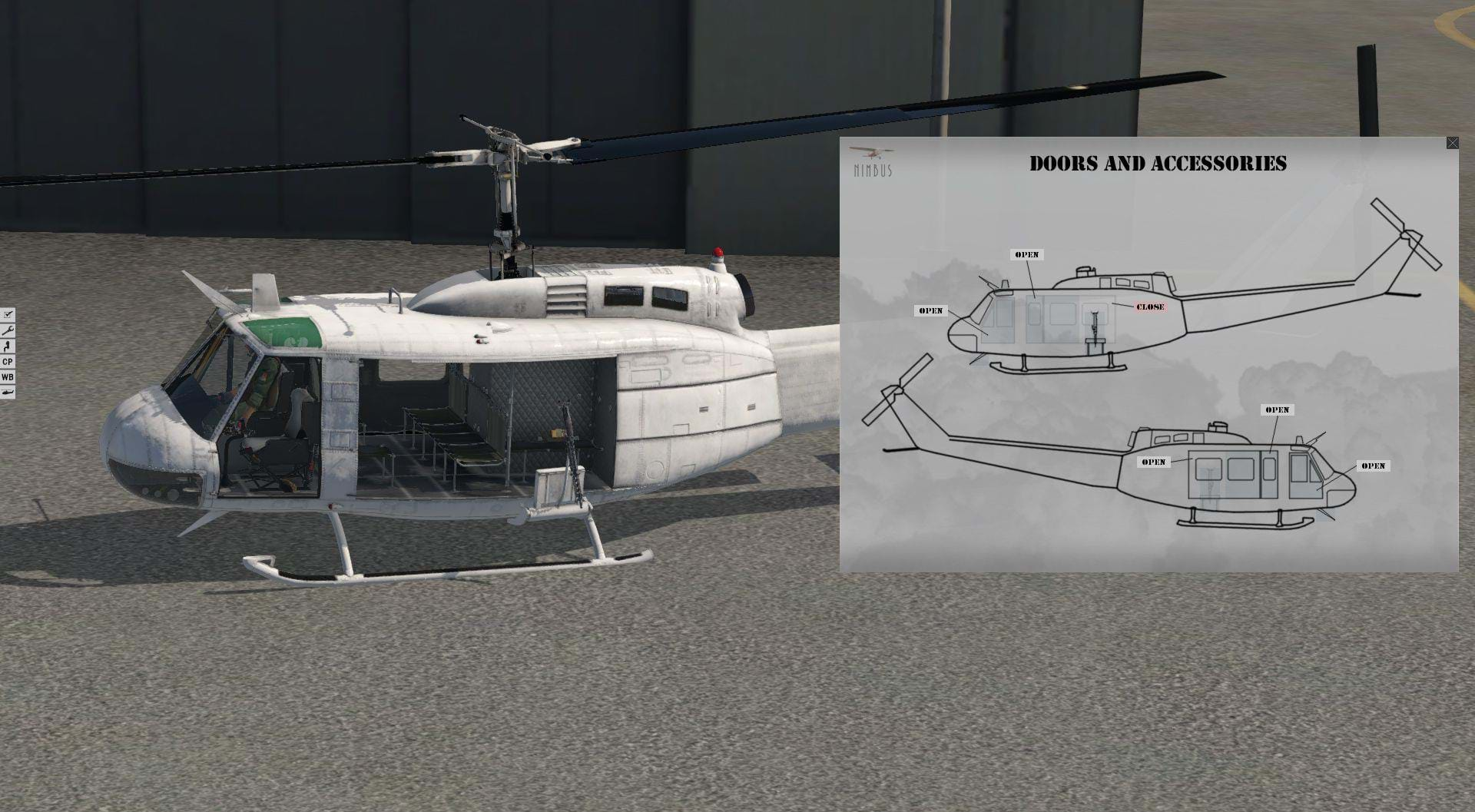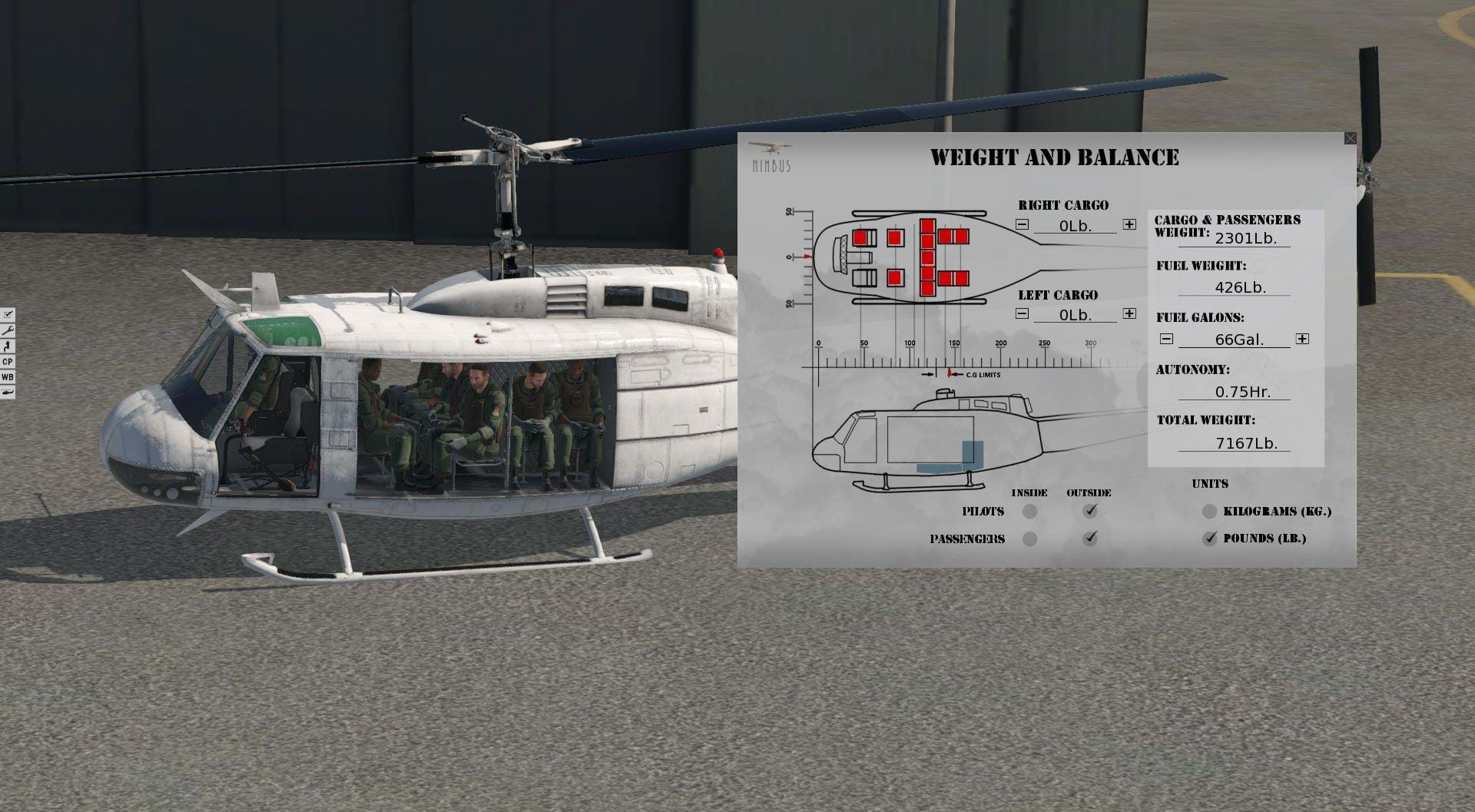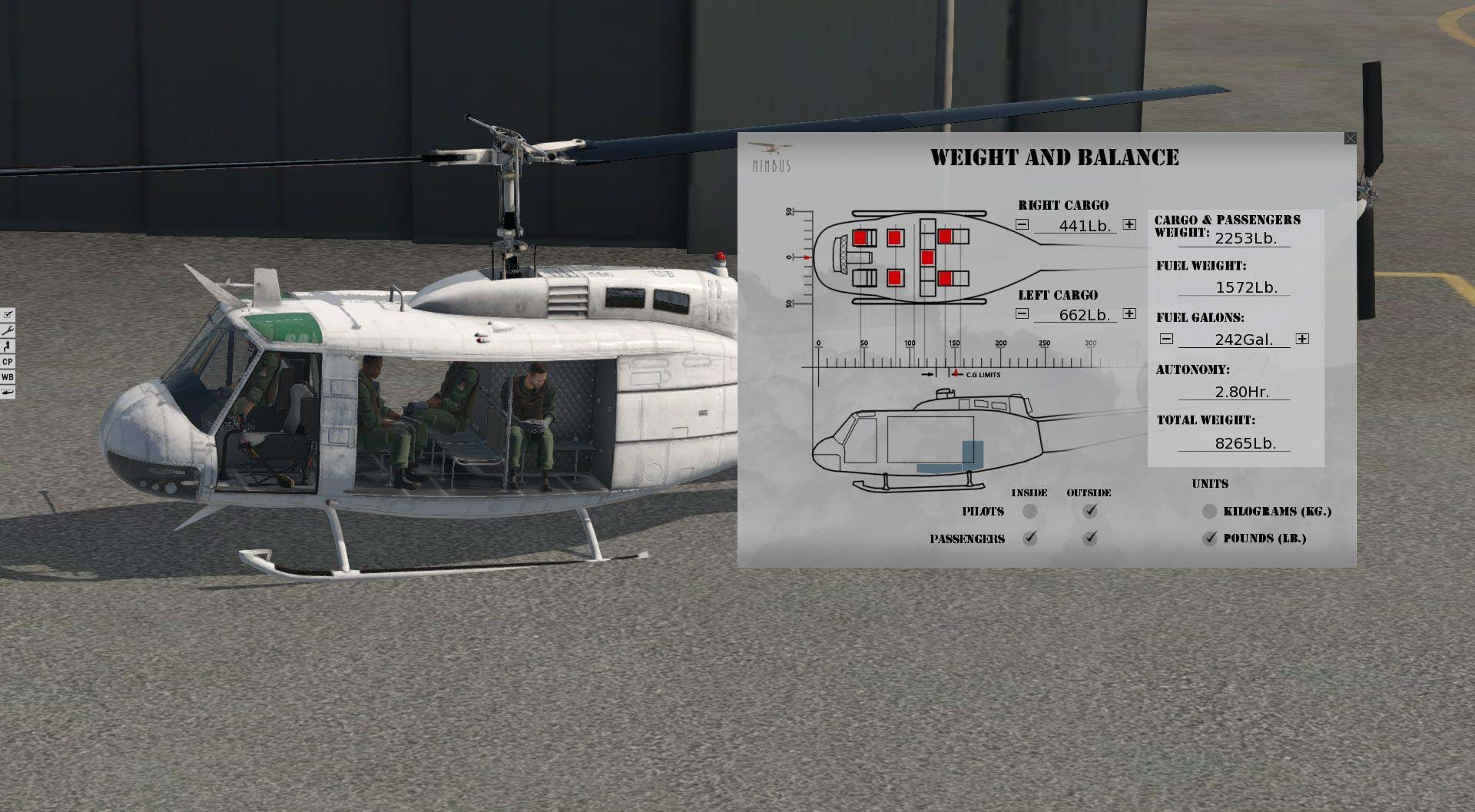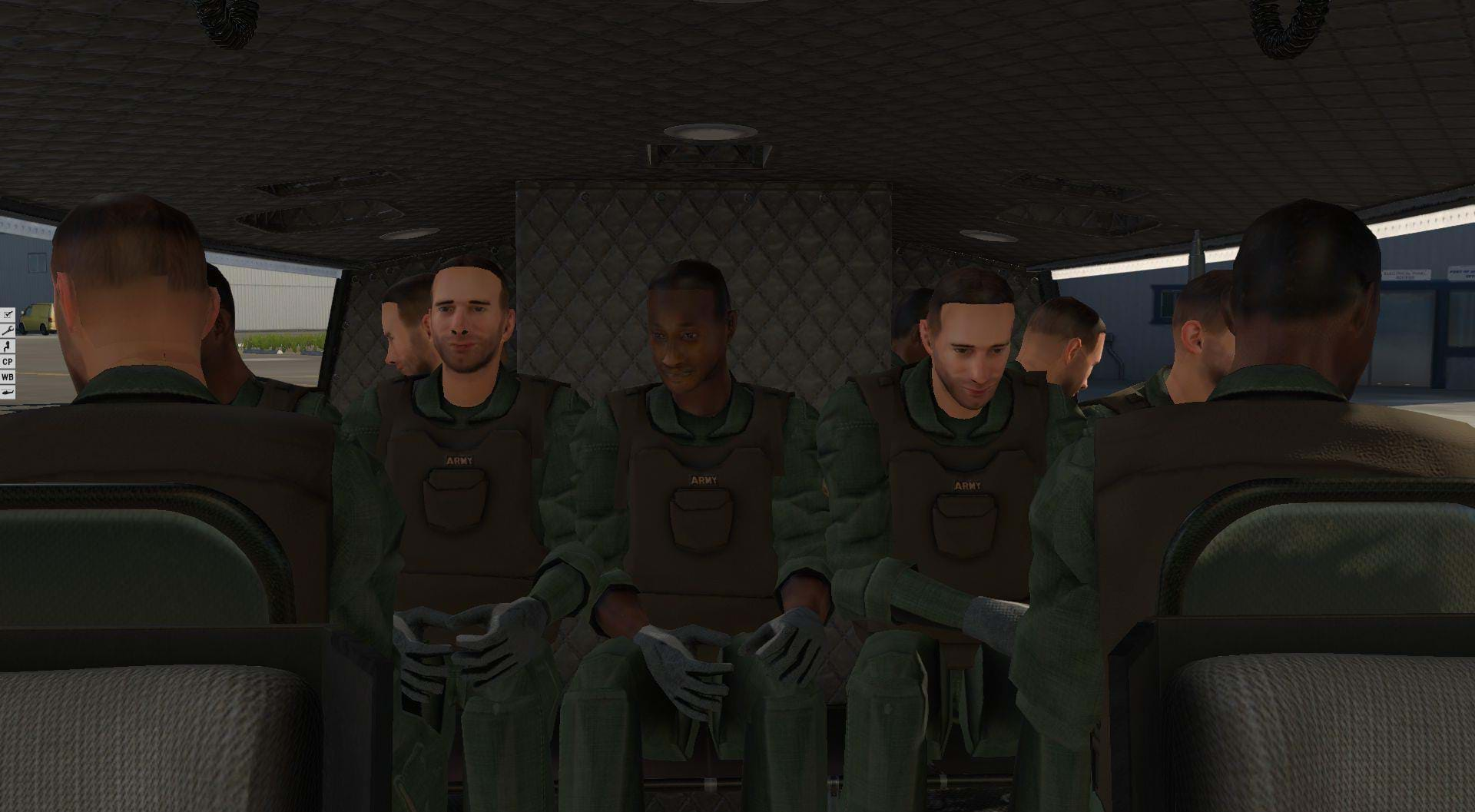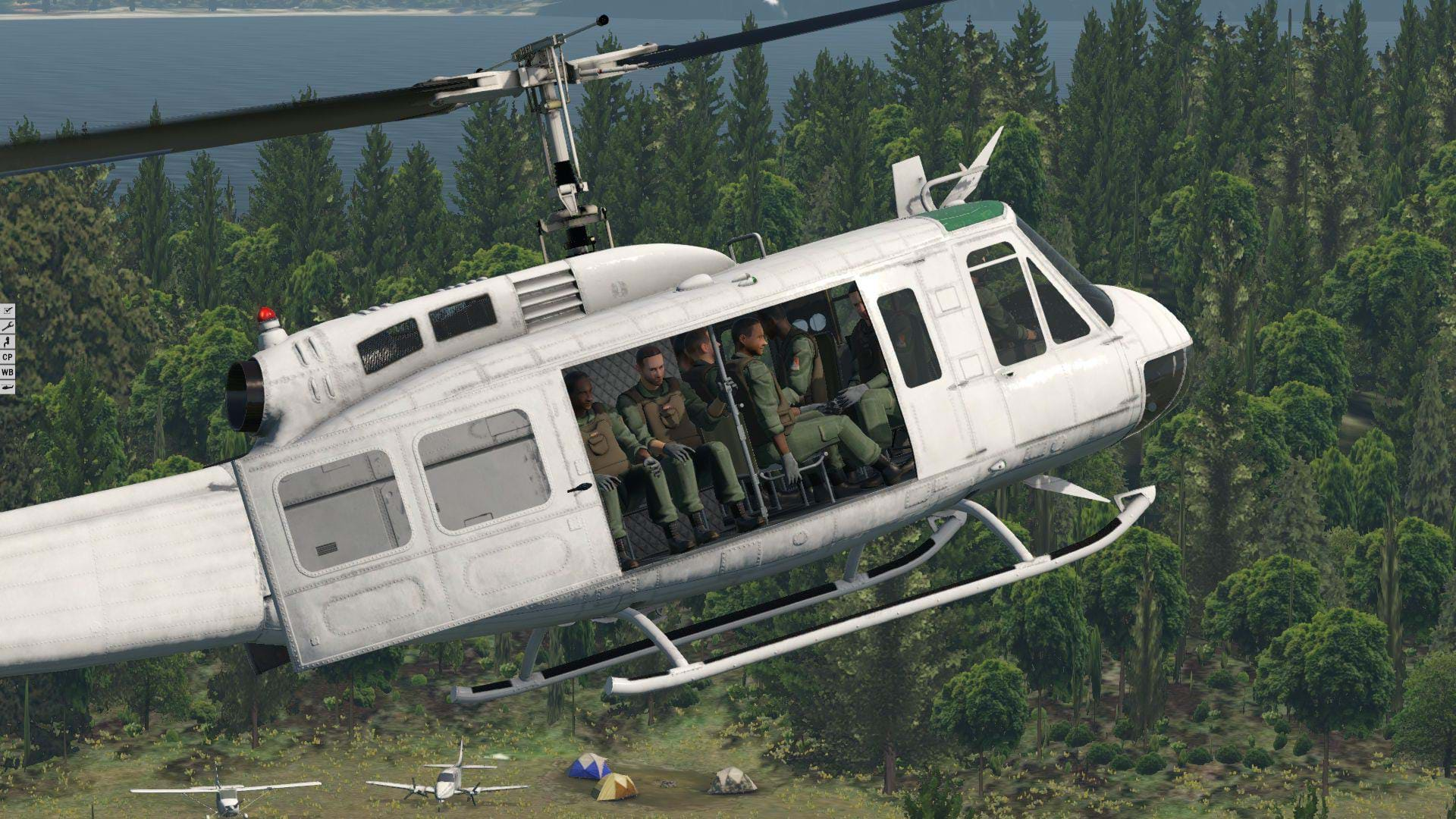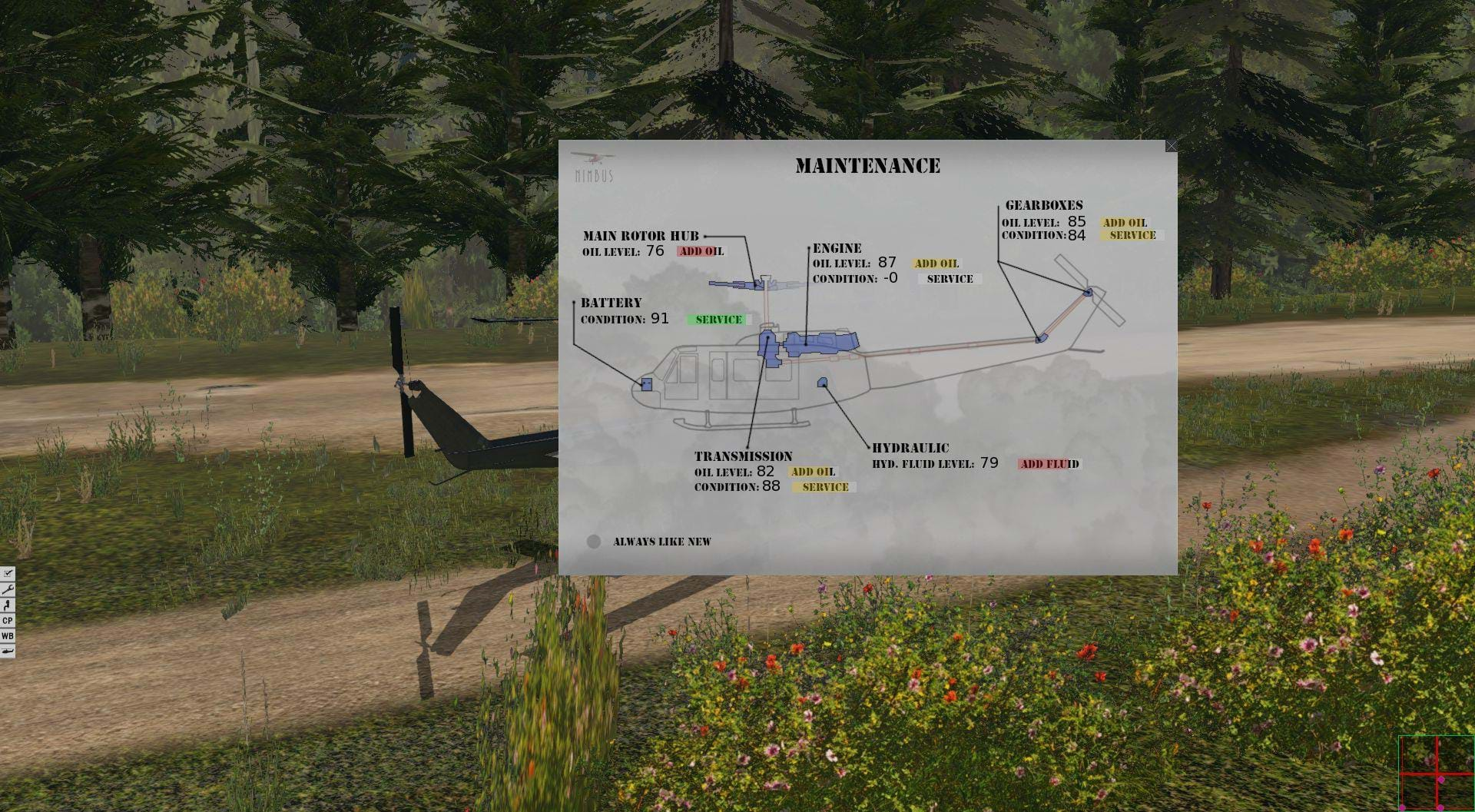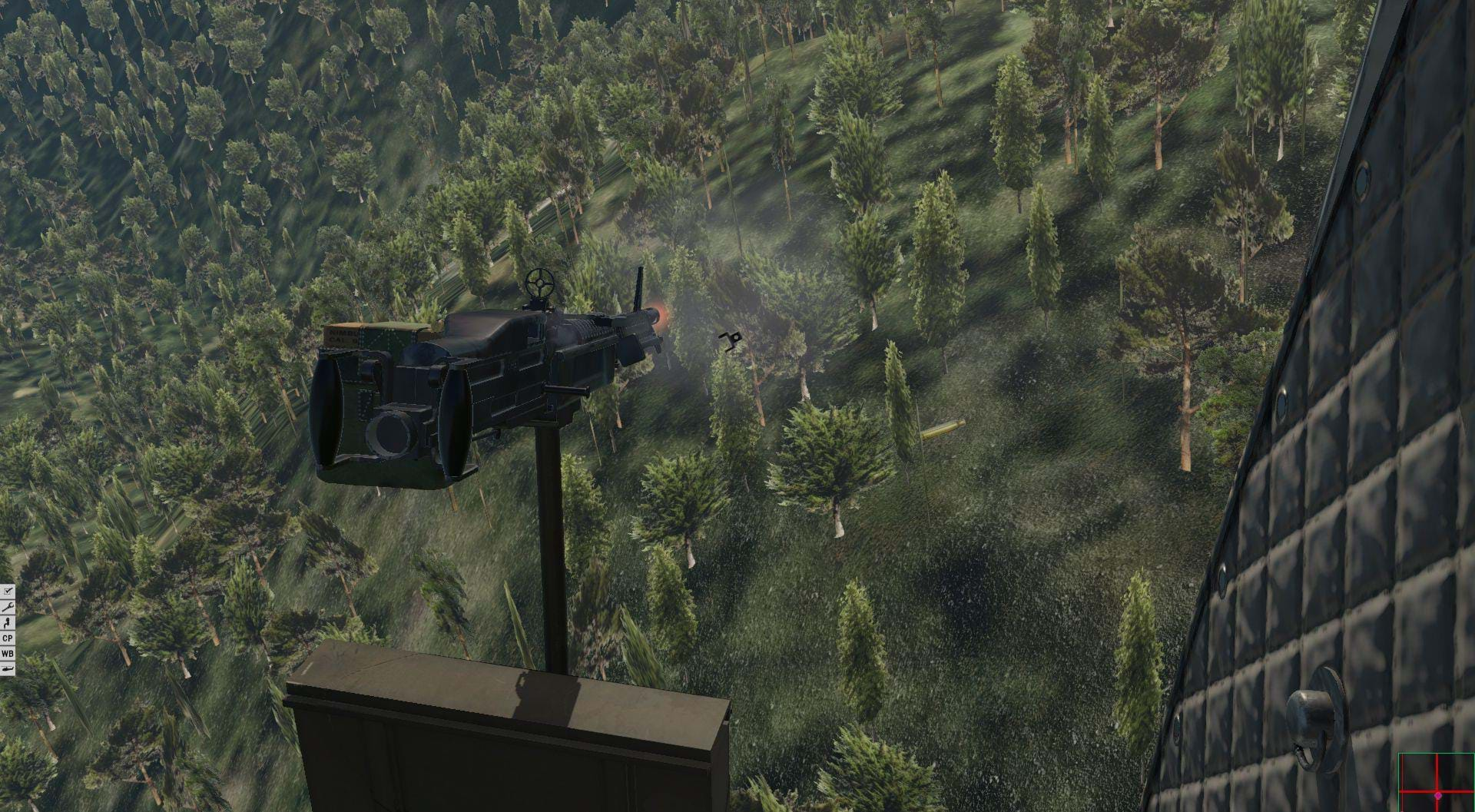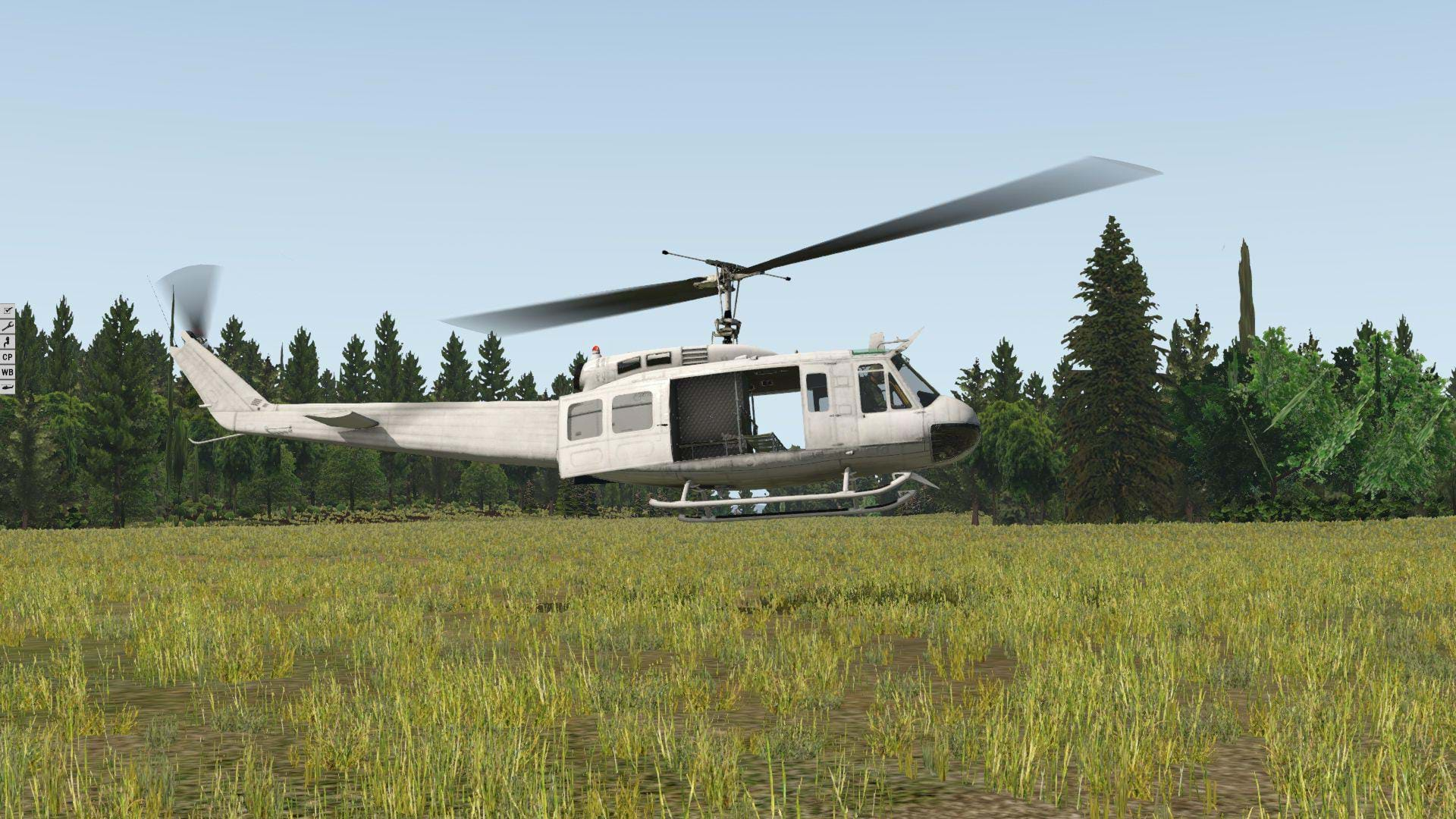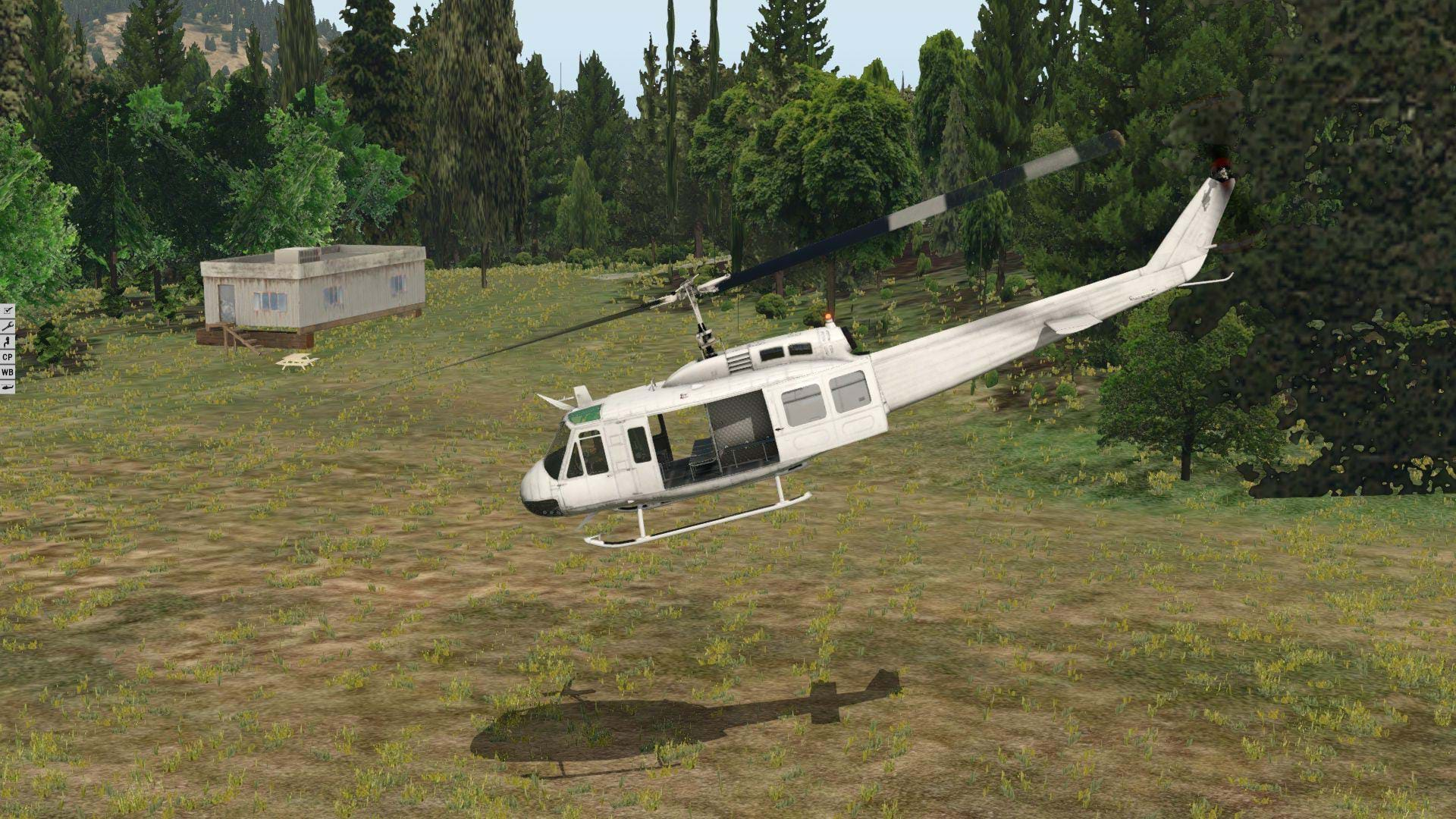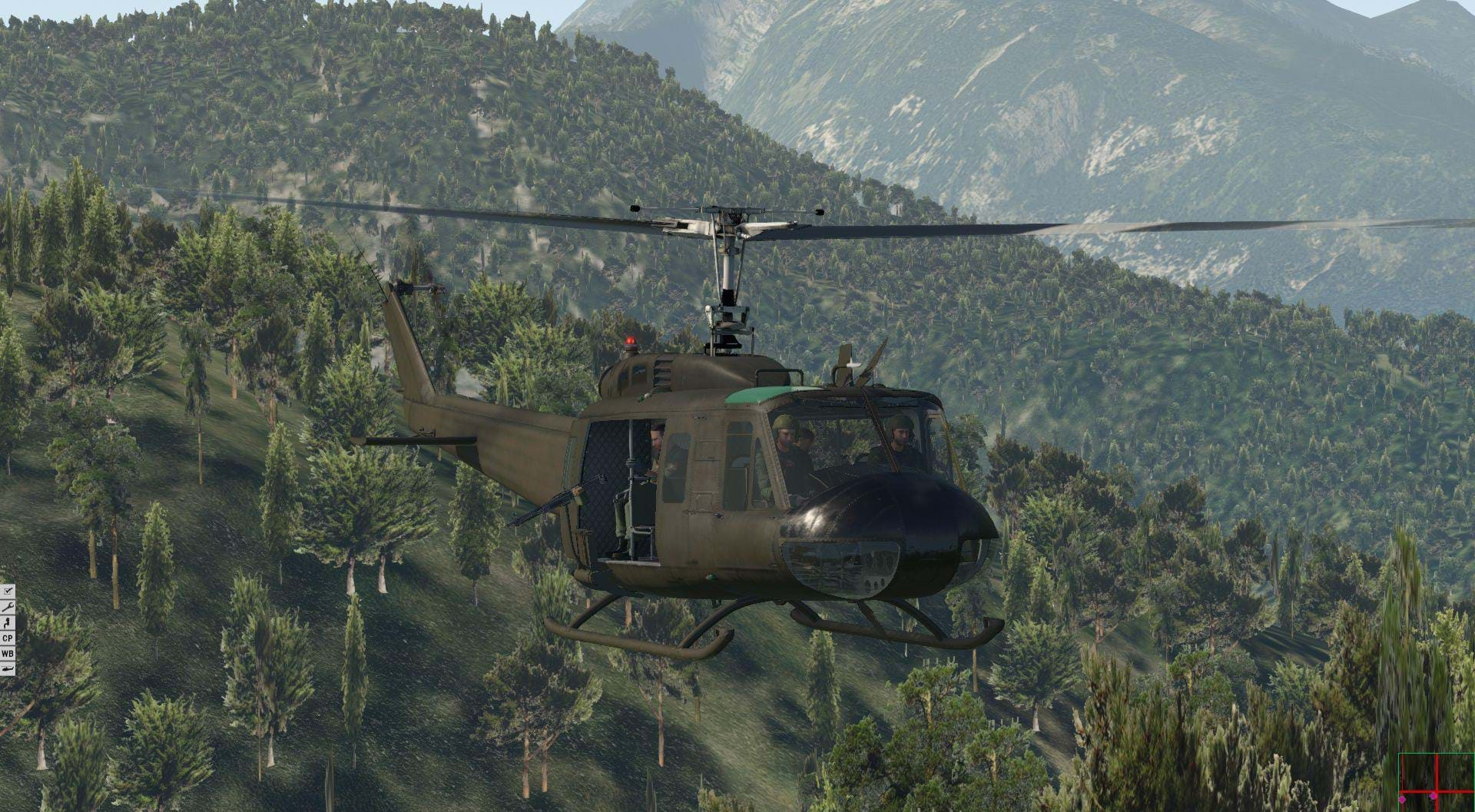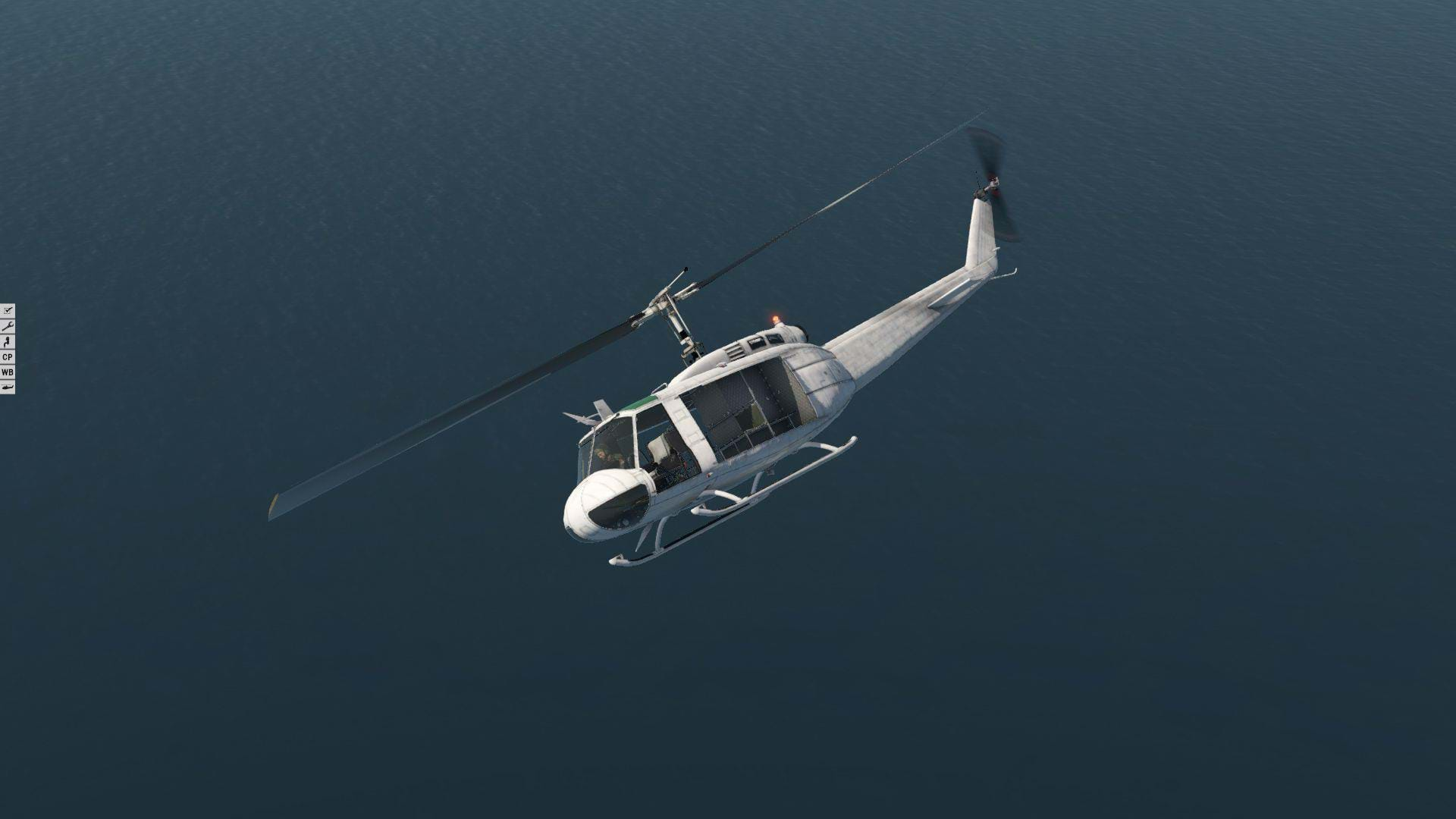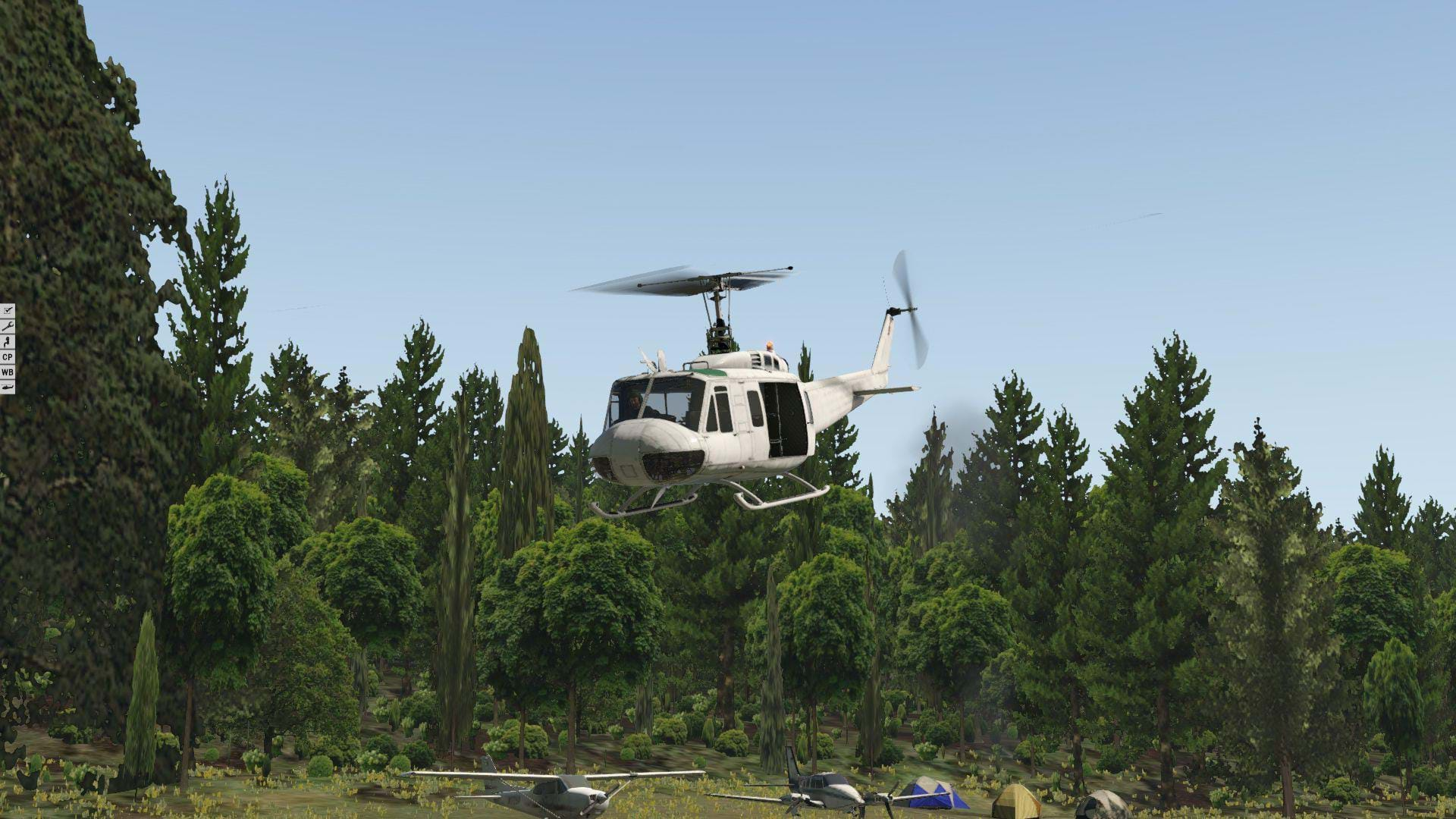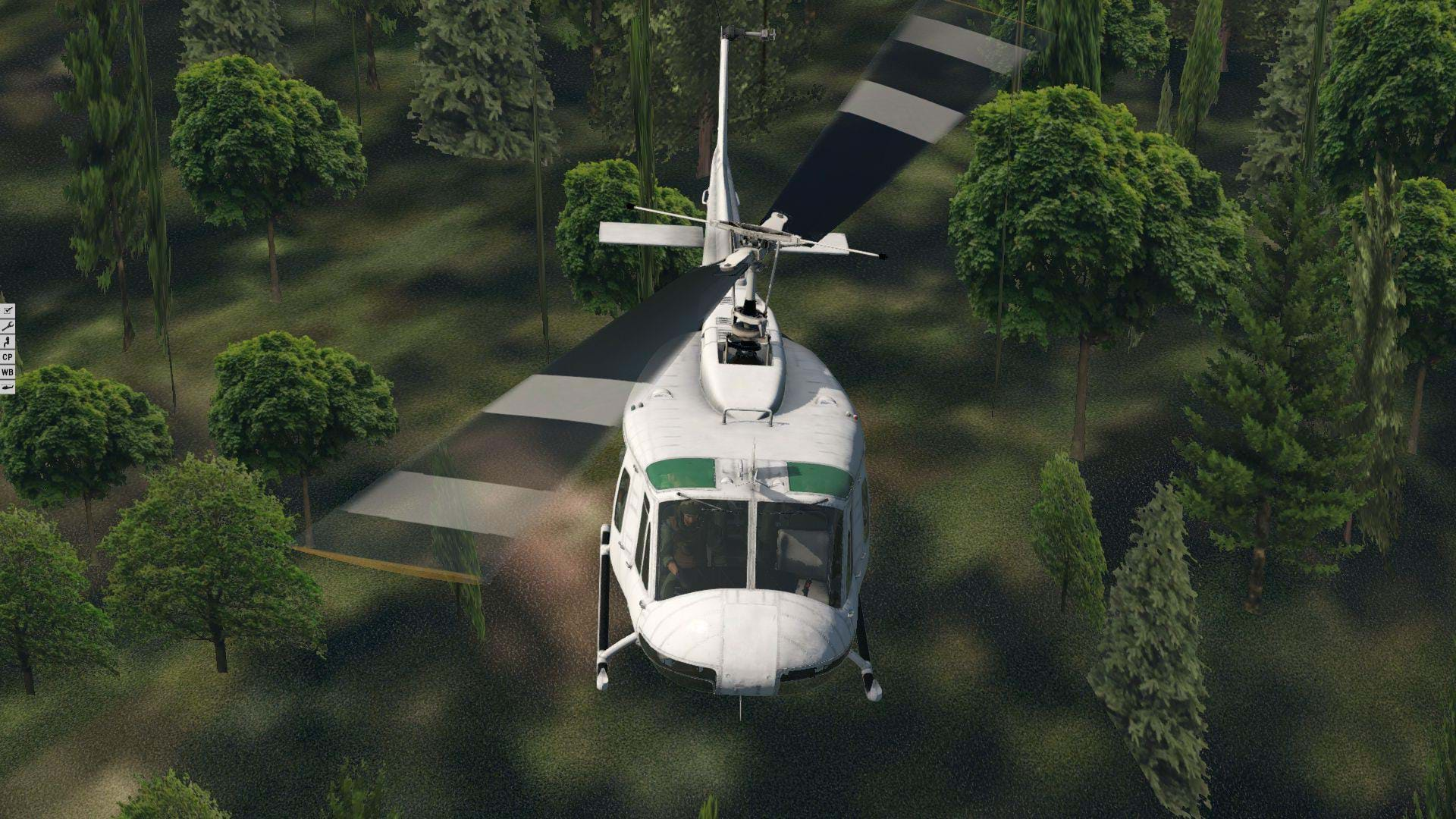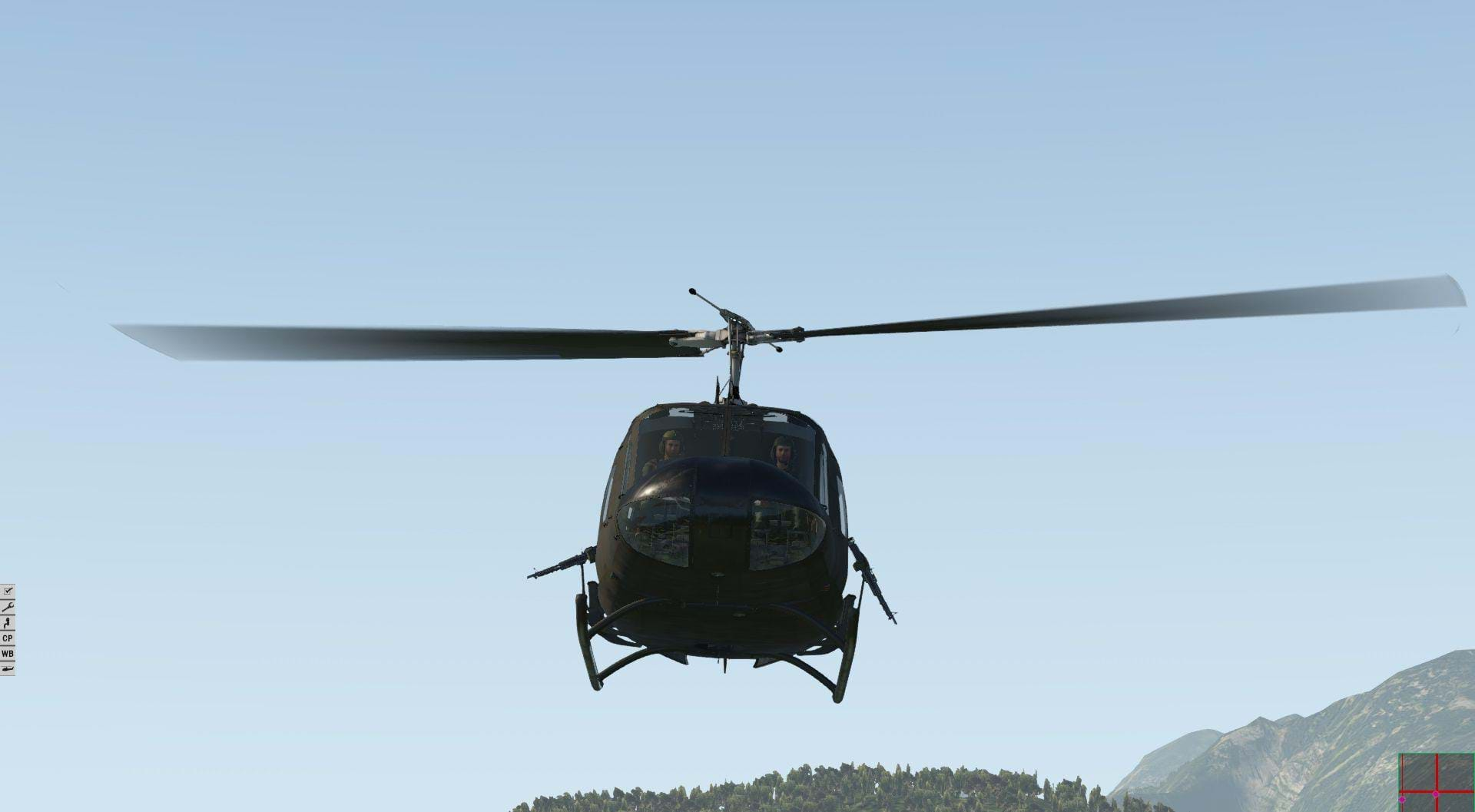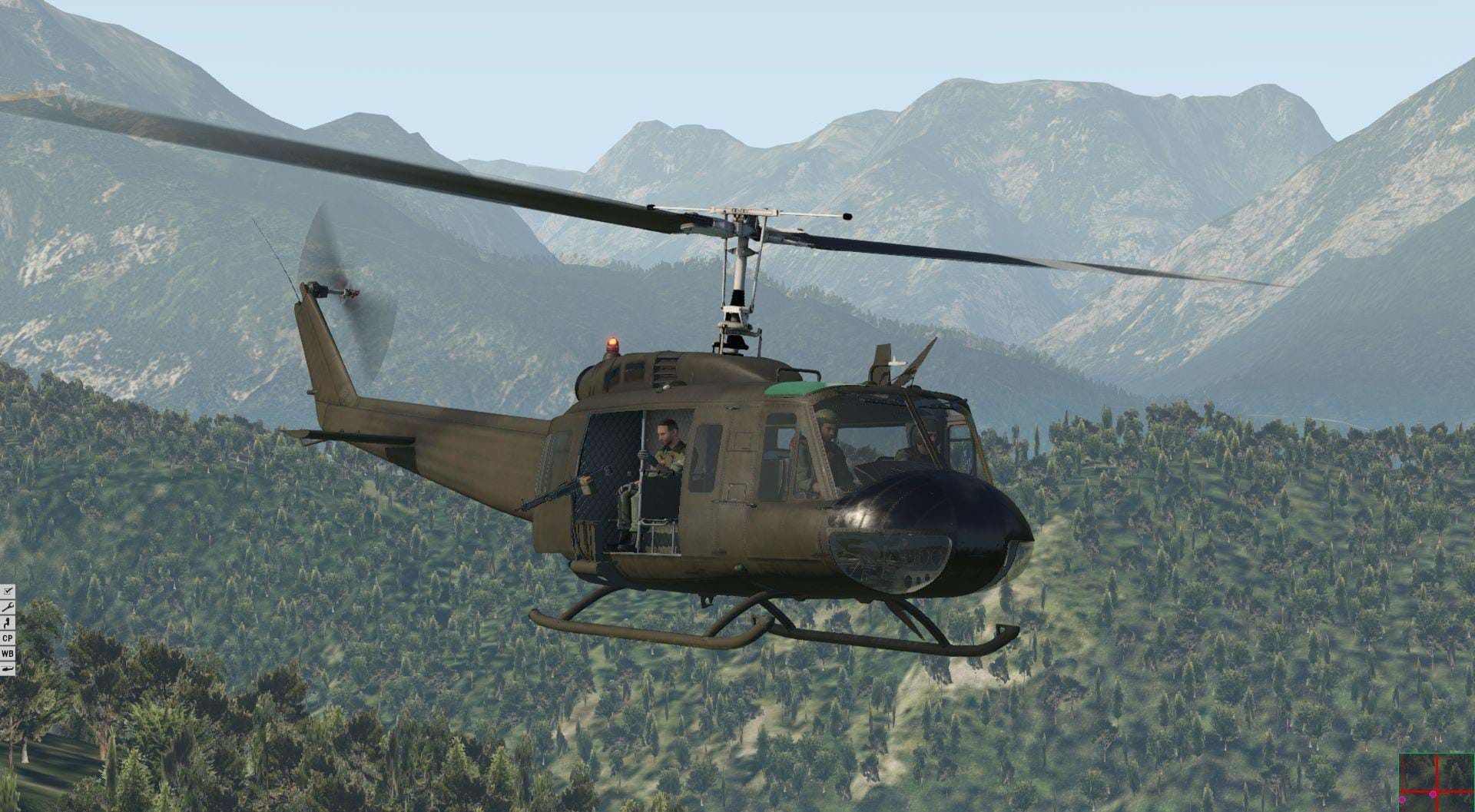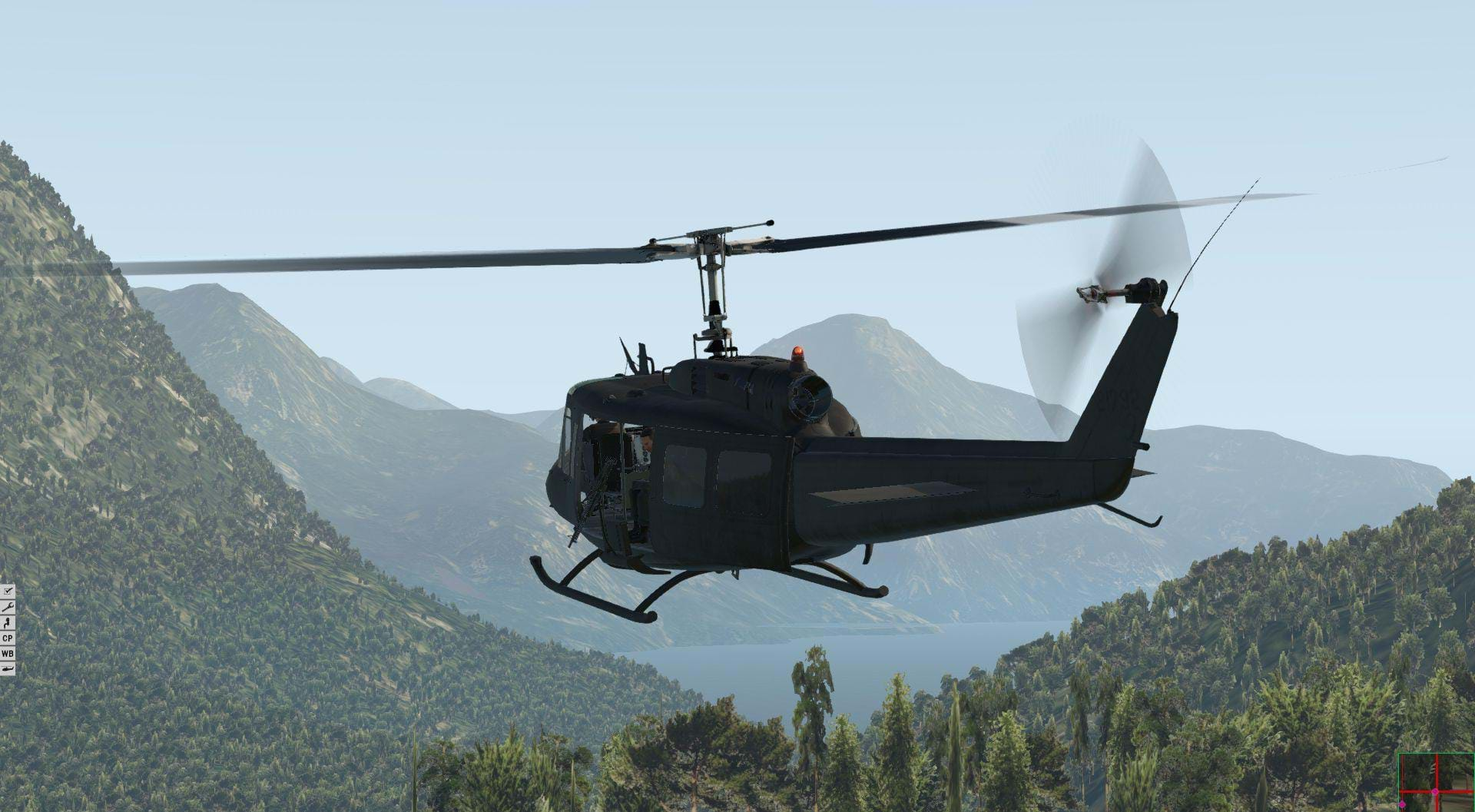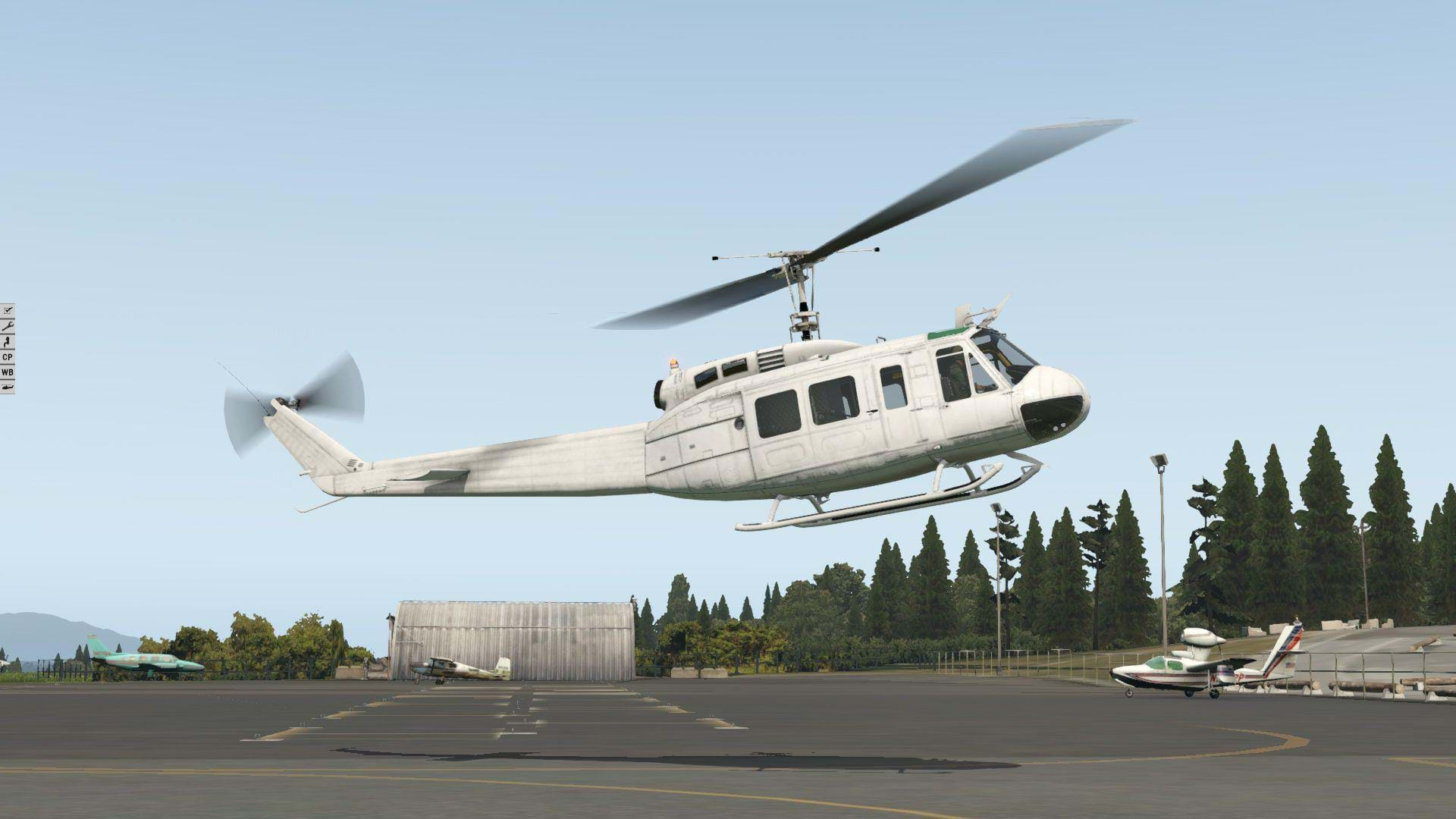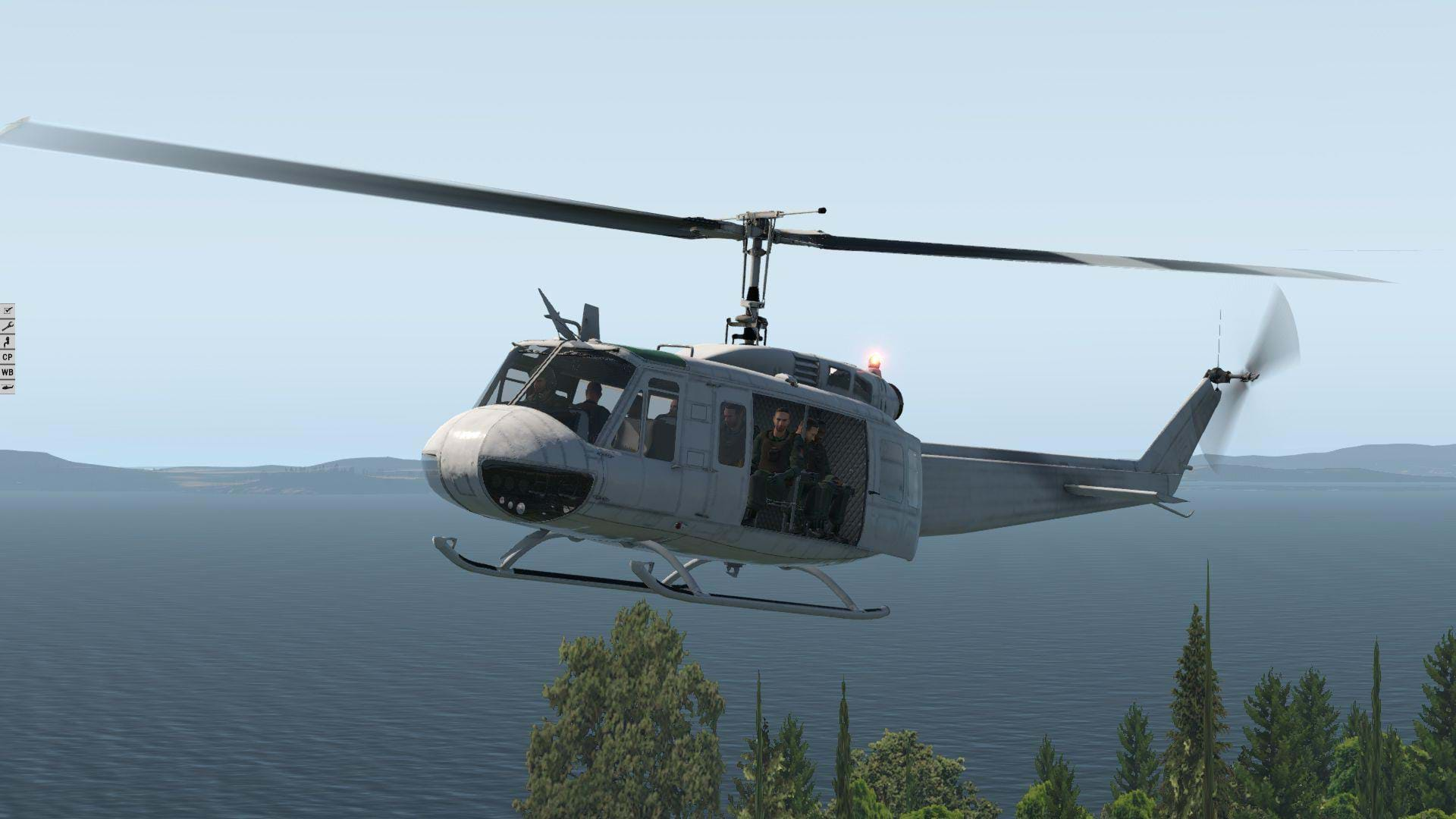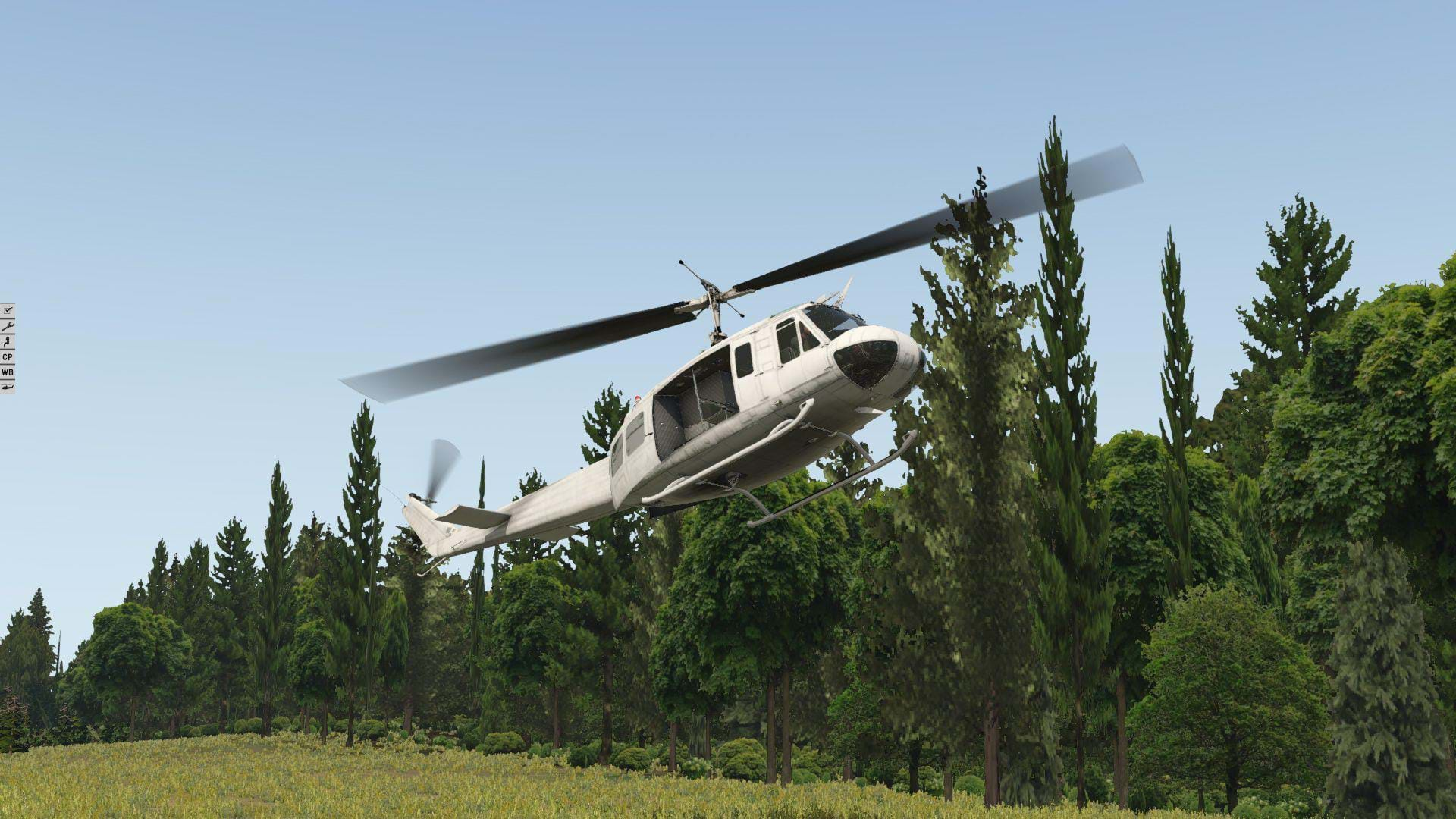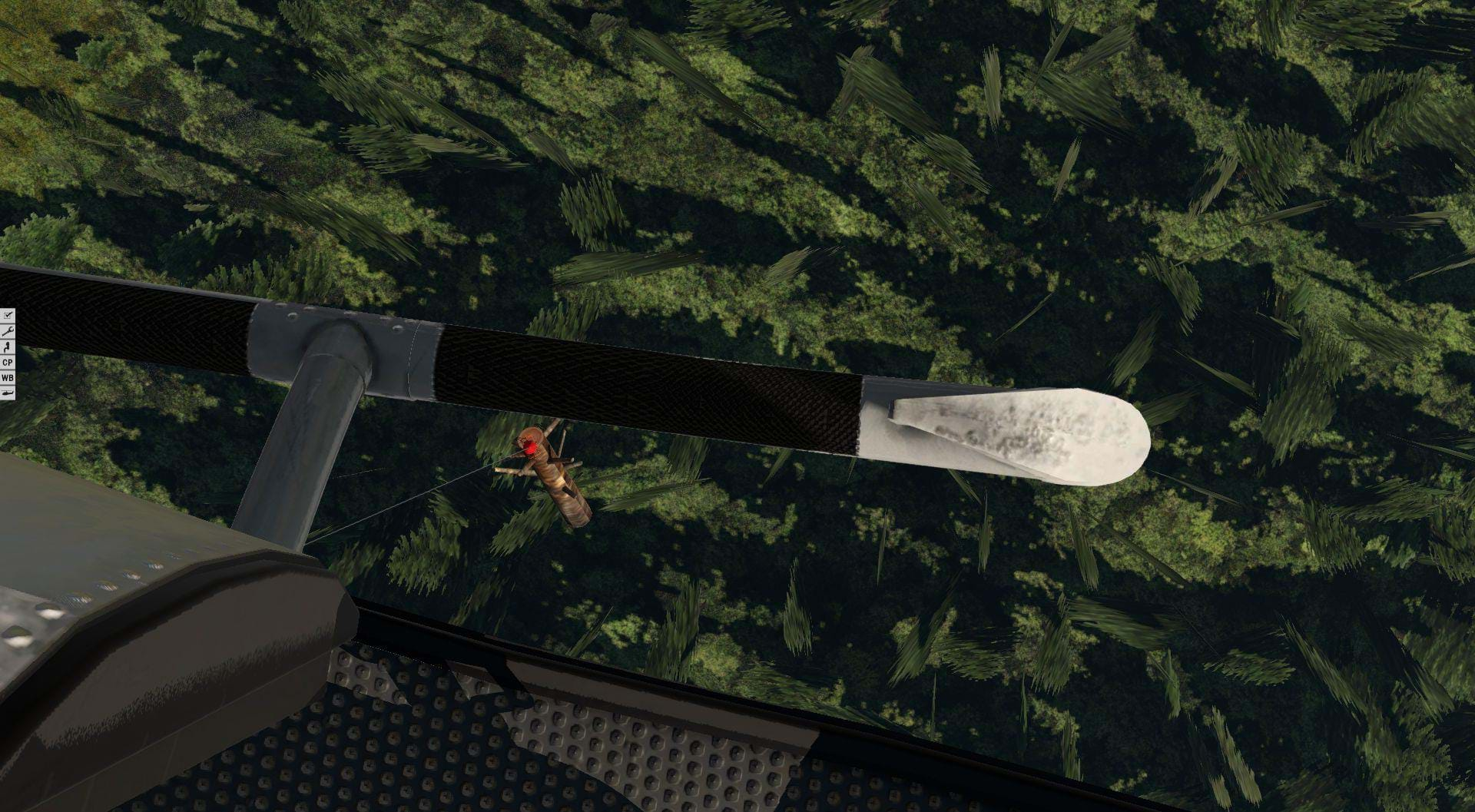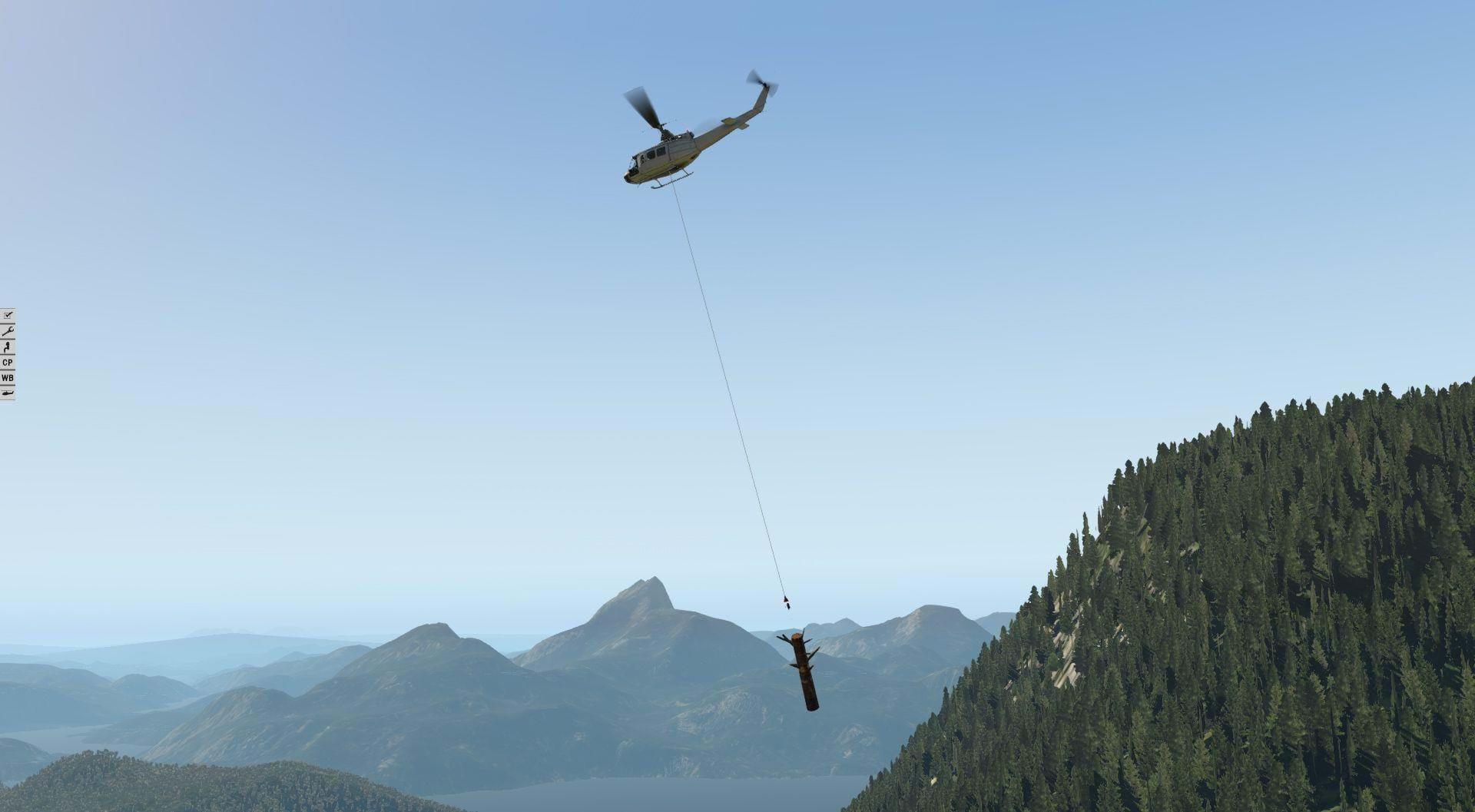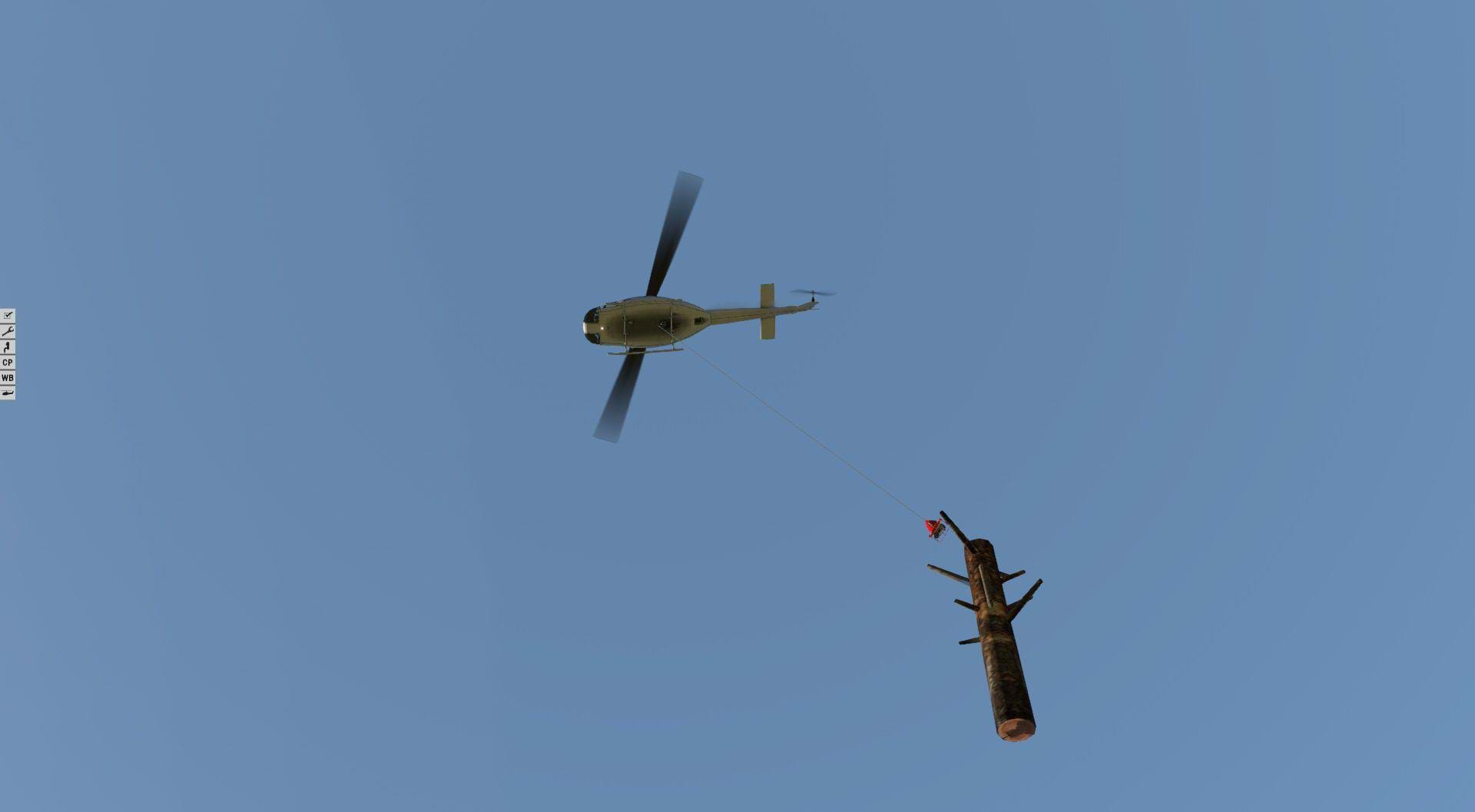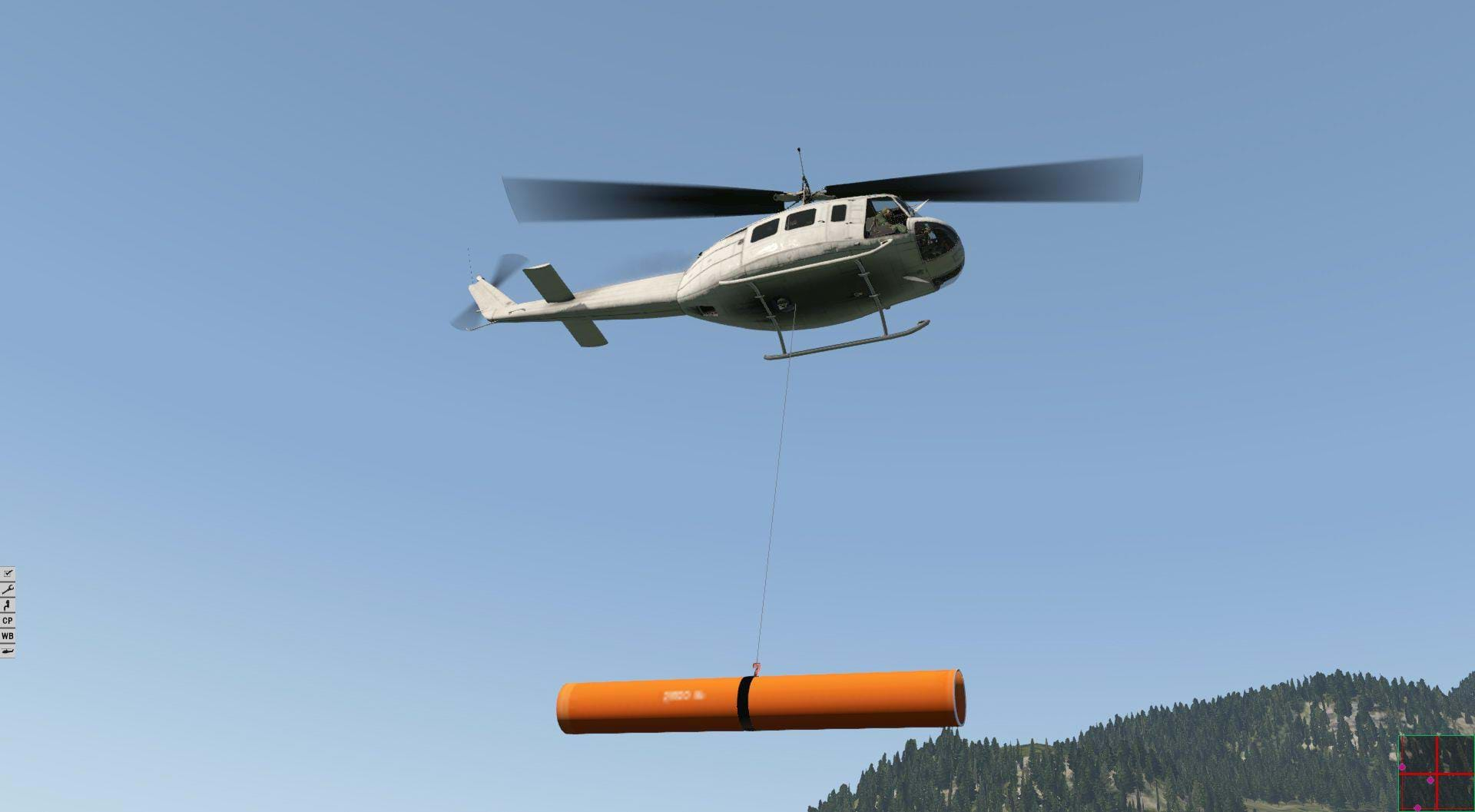I don’t need to introduce the UH-1, not again anyway. This is the second time I’ve reviewed a UH-1H for HeliSimmer.com. The X-plane community has been asking for a UH-1 since the dawn of high quality payware. We have the X-trident 412, which is awesome in its own right, but even though the two aircraft share similar DNA, the 412 is a very different helicopter. Finally, Nimbus stepped up and came through.
I already know why some of you are here. You want to know if this model is better than the UH-1H for DCS, originally produced by Belsimtek. We’ll get to my take on that later on in the review. For now, let’s look at this model on its own.
Installation
This model installs just like any other X-plane add on, just stick in it your Aircraft folder after you unzip it. But you’ll need to activate it with the code you received after purchase. After it’s activated, I recommend that you re-start X-plane completely rather than just reloading the aircraft.
First look
My first impression of the 3D visual model of the Nimbus UH-1 was that of amazement. DETAILS, this model’s got ’em! Lots of them! Let’s start with the cockpit. The Nimbus Huey has the distinction of being the first X-plane flight simulator model to get me out of Brett S’s freeware Hughes 500D! If you know me, you know that’s saying a lot.
Alright, I’m just going to say it. In my opinion, this is the best UH-1H cockpit I’ve seen so far. There isn’t much that wasn’t modeled. Just about every nut, bolt, screw, cable, and tube are modeled in 3D. Few if any components are painted on as textures. I’ll let the screenshots do the talking for this part.
I did have a few gripes about the cockpit model, but not many. The B-8 grip on the cyclic has some weird misshapen proportions at the top, and the circuit breakers seem to be chromed. Are chrome circuit breakers stylish? Absolutely! Are they realistic? Not that I’ve seen. One thing that took some getting used to in the cockpit model were the switches on the overhead and center console. Most are a bit bigger than what I’ve seen in the UH-1’s I’ve been in.
I’m convinced that the philosophy of Nimbus when creating the 3D model was “MODEL EVERYTHING”.
The external Model is just as impressive as the cockpit. There are details in this model that you wouldn’t even think to look for unless you were purposely trying to find something out of place. Which of course is exactly what I was doing. Take the main rotor head for example, in the screenshots below, you can see the level of detail as you zoom in.
As I scrutinized the external model, I kept thinking to myself, “the only thing that’s missing is torque stripe on the bolts, and safety wire” well, it didn’t take me long to fine that either. The tail rotor has lots of details that really show Nimbus took a lot of time and care in this model.
This model has a few subtle animations that really go far in selling the whole experience when viewed from the outside. The whole aircraft shakes while on the ground at idle, this effect may be a little much, almost like the blades are out of track, but it looks cool. The whip antenna on the top of the vertical fin has a nice natural looking movement to it. And if you have to door guns on, they shake and vibrate.
The external model also has some customizable features that you add or remove on the fly. M-60D door guns, wire strike protection kit and a roof mounted UHF/VHF antenna are all customizable from the menu while the sim is running.
You can monitor the CG, and aircraft weight from a separate menu. Passengers, fuel, and cargo loading can all be adjusted and monitored from the weight and balance page.
This is a great feature that really makes this model a lot of fun for me. It adds a dimension to flight planning that you don’t get in any other Helicopter flight simulator model. Each passenger and crewmember weigh 192lb or 87kg and there are 12 spots to chose from besides the pilot’s seat. The cargo loading is divided into left and right sections with a capacity of just over 1700lbs/800kg each for a total of a little more than 3500lbs. you can easily exceed the models max GWT, or it’s longitudinal or lateral CG, so planning is a must. The best part about this is that you can change all of this on the fly while the sim is running.
This is a great way to simulate the picking up of passengers, and or cargo, fly them to a destination, and drop them off. What’s even better, the passengers can be visible inside the helicopter when that option is selected.
When testing this, I noticed that the fuel weight seemed to be a little off. Not by much, but it was enough to make me check my math again. At first, I thought that Nimbus made a mistake. I’m accustomed to performance planning using JP-8/F24. JP-8 weight about 6.7lbs a gallon, these numbers looked light. But it didn’t take long to figure out that this model uses JP-4 for its calculations. After that, the fuel weight was a little closer. I know that’s really nitpicky, but it was bugging me.
Sounds
The sounds of this model are fantastic. I’m going to go ahead and say it. These are my favorite Huey sounds for any sim I’ve had. Not to say there aren’t some good ones out there, but this sound set is my personal favorite out of the box.
There is an increase in blade noise during turns, flares, decelerations and auto rotations. The famous “thump” of the main rotor blades is present, but just about every Huey model has that. But that’s only part of the Huey sound. The Nimbus Huey also has a great tail rotor sound too.
I know that may sound weird, but the sound of the tail rotor adds a certain quality to the sound signature of a helicopter. And, due to its higher RPM, the tail rotor is also responsible for the majority of the “noise” that’s associated with helicopters.
There’s a reason that NOTAR configured helicopters are quieter than standard Main and tail rotor helicopters, it’s that pesky noisy tail rotor. Nimbus does a good job of capturing the growling whine of the UH-1H’s tail rotor, this really completes the whole soundscape for me.
There’s a difference in sound level when the cabin doors are open, and when the pilot’s doors are removed. What you don’t get is the DreamFoil 407 type noise change when you stick your head out of the door. Which is perfectly fine for most users.
Systems
If you’re familiar with the DCS UH-1H, the Nimbus UH-1H will be very familiar to you, so learning to start this one is a matter of setting your key binds to the appropriate commands. If you are a X-plane only user, and this is your first Huey for a simulator, there is an integrated checklist option for the user. Unfortunately for the VR users, like the other menus, these can’t be seen in VR.
The systems modeling is on par with any other X-Plane model out there. The UH-1 isn’t a complex machine as far as helicopters go. The electrical system indications in the cockpit are modeled pretty well, you can see a draw in amperage/voltage with starting the engine.
It also makes a difference weather you are in the Start Generator or Standby Generator switch position for engine start. You’re DC voltmeter won’t show anything unless the overhead rotary switch is set properly. So, this model does pretty well for electrical systems.
This model does a lot of things right when it comes to the start up sequence, but it suffers from a similar limitation as the DCS model does. In both models the throttle is set to idle for engine start. Both this Huey and the DCS Huey lack an effective way to simulate the idle stop solenoid on the pilots collective.
In the actual helicopter the throttle is set to the “off” side of the idle stop, which you can’t feel on a Thrustmaster T-1600, Saitek X52, or a PFT Puma, so it makes sense that a developer would just have you crank your simulated L-13 with the throttle set to idle.
This model has great take on the hydraulics system. When testing it, I found that the controls behaved somewhat normally, which was initially disappointing, but soon, after the simulated hydraulic pressure had bleed down, I had a hand full of helicopter that was extremely difficult to control. This is in stark contrast to other models that have an instant loss of hydraulic power when the system is switched off.
This model comes with something unique that I haven’t seen in any much of in any simulator for helicopters. And that’s a maintenance panel. With this feature the user has the option to maintain their aircraft’s fluid levels, like engine oil, tail rotor gearbox grease, and transmission fluid.
It’s the closest thing you can probably get to an actual pre-flight inspection and maintenance functions. It’s not meant to be a full maintenance program, but just enough to make interacting with this model a little more interesting. If the user doesn’t want to mess with maintenance, they can always select the Always Like New option and have a brand-new helicopter every time you load the sim.
While it’s not exactly an aircraft “system”, the door mounted guns are operational in an X-plane sort of way. They’re not as developed as the door guns in DCS which is to be expected. There aren’t a lot of cherry LZ’s in X-plane. However, this model has a “CoPilot” that lets you hand over control to your virtual Copilot and go back to one of the door gun positions and fire the M60D Machine guns! They’re pretty well animated, and includes spent brass and ammunition links flying out of the ejection port.
Flight Dynamics
Ok, so it has a bunch of eye candy and fancy menus, but how does it fly? For me, the standard for payware X-plane helicopters, DreamFoil and X-Trident. I now hold Nimbus in just as high a regard as those two. That’s how much I enjoy flying this model in X-plane.
This model exhibits very good behavior at a hover. Cyclic responsiveness is appropriate for a helicopter this size and feels right to me. One of the things I like most about this model is that there is a noticeable difference between a light helicopter, and a heavy helicopter when it comes to flight control response.
The model responds relatively quickly to cyclic and collective input at 6,500lbs, but takes a larger initial cyclic input and there’s a slight delay when trying to get a 9,000lbs helicopter to move. This model does really well at simulating the mass of this aircraft, which is important an important distinction. Unlike other single engine helicopter models for X-plane, there is a pretty large difference between the UH-1s empty weight, and it’s max GWT of 9,500 lbs.
The cyclic input required due to a change in CG is also appropriately apparent. This will let the user get to explore load distribution and planning better than any other flight simulator model that I have tried.
The performance of this model is very close to the figures in the US Army’s operator’s manual. I tested this model at sea level, 7,000lbs GWT, 20o C. Hover and cruse power requirements were spot on. And the EGT temperature is about where I would expect it to be. The OGE power was a little on the low side from what I was able to determine from the performance charts. Not a huge deal but it was something that I noticed.
The Huey is not a fast helicopter by modern standards. The UH-1H wasn’t even particularly fast compared to other helicopters of its day. About 90kias is were most of the Huey Pilots I know like to hang out for cruse. Once you get this model up to about 110, you’ll notice an increase in vibration as the drag on the fuselage and high pitch of the main rotor blades join forces to try to convince you to lower the collective and slow down a bit.
Speaking of speed, retreating blade stall is modeled, but it’s really unlikely to get a UH-1 into retreating blade stall in level flight unless at a high GWT and or high DA environment. This model does an ok job of RBS, it’s not perfect, no sim does it well in my opinion, but I think it’s cool that it’s there.
The Nimbus UH-1H has the best implementation of VRS that I have seen so far. It’s not as easy to get into as it is in DCS or Dodosim’s Bell 206, which is refreshing and far less frustrating. In short, you can get into VRS if you want to, but you’re less likely to get into it if you’re flight momentarily experiences a predetermined set of parameters. You still have to be mindful of what you’re doing, but it’s not your main focus. This allows a much better experience in my opinion, and to me it’s a better representation of the dangers of VRS.
Tail rotor authority is well modeled in the Nimbus UH-1H. the amount of anti-torque pedal input is appropriate at a hover, and there’s an increase in left pedal required when hovering at higher torque settings. This model also hovers about 3 to 4 degrees left side low, which is a good indication that translating tendency is in effect here. However, being a teetering semi-rigid rotor system, the Huey should hover at a level attitude, unlike most modern helicopters with rotor blades offset from a fixed hub.
Translational lift is certainly present here, but it suffers from the same shortcomings as just about every other helicopter flight simulator. There is definitely an increase in efficiency of the rotor disk as you accelerate into forward flight from a hover, but this model lacks what almost all other models do when it comes to translational lift.
During certain takeoff profiles, the helicopter will dip in altitude a little just prior to the entering effective translational lift. This is most prevalent when taking off from an IGE hover and using only IGE hover power. I don’t typically do that type of takeoff unless I’m power limited due to weight, density altitude, a combination of both or training for those conditions. The onset of translational lift is very rapid in this model, almost too fast.
You’ll see the aircraft start an immediate climb about the same time the airspeed indicator comes alive. It’s not the most realistic implementation of translational lift, but it’s there.
This model also has something that no other payware helicopter for X-plane has. And of all the payware helicopters available for any sim, this one does it the best. Unanticipated Right Yaw or URY, is most commonly known as LTE, Loss of Tail rotor Effectiveness, but that’s not the best name for it, and can lead people to believe that it’s something it isn’t.
But let’s be honest, LTE is a lot easier to say than URY. Like VRS, not all helicopters experience URY the same way, in the same conditions. Even the same pilot in the same helicopter in similar conditions may get into during one landing, and not in another.
It’s a really tricky scenario.
The implementation of it in the Nimbus is just nuanced enough to make it the most realistic URY that I’ve seen, and it’s by far the most successful. You won’t get into it every time, and if it begins you can counter it if you catch it soon enough which is pretty realistic.
Throughout the entire time I beta tested this model, I only got into it once, and it caught me by complete surprise. I was able to recover the aircraft, but not before I spun about the mast one and a half times. For a better understanding of URY, I highly recommend reading FAA Advisory Circular 90-95 .
The autorotation characteristics are really good with this model. And the behavior of the rotor RPM and rate of decent changes appropriately according the aircrafts weight. This thing autos much differently at 9000lbs than it does at 6,500!
Rotor RPM management takes a lot more of your attention as the rotor tends to want to overspeed very quickly, this goes in conjunction with the noticeably higher rate of decent at higher aircraft weights. Another thing I like about this model is the rotor inertia isn’t unrealistically high. The Huey is known for its high inertial rotor, but some simulator models have a ridiculous amount of rotor inertia that allows for all sorts of unrealistic behavior. This rotor bleeds off energy just the way it should during the recovery phase of an autorotation. It also has a good needle split and a pronounced right yaw when you roll the throttle to idle for practice autos.
Yeah, great, but how does it compare to the DCS UH-1H?
This was the most common question I’ve seen on the forums and Facebook pages. I’m certain that a good number of you are reading this review try and determine which model is the most realistic. The DCS UH-1H has an almost legendary status in the helicopter flight simulator community. For some people it is the standard that all other flight simulator models are compared, which is a completely understandable thing to do, I did so myself for a while. Even with its shortcomings it is a great model. But, the appreciation for the DCS Huey, and DCS as a whole can sometimes approach hyperbole in its praise.
Which one is better?
Well, the short answer is quite simple, but likely to be unsatisfying to one who’s looking for a clear winner. And the answer is…
It depends.
The DCS Huey vs X-plane Huey debate is essentially an extension of the DCS vs X-plane debate. It’s hard to identify a clear winner because people use home flight simulation for different reasons, and therefore certain things become more important than others. This goes beyond the Combat sim vs Civilian sim concept, although that can certainly play a big part in this debate. This conversation can go on for hours covering all the different aspects and qualities of each simulator and what they can offer, so for simplicities sake let’s narrow this down to just flight modeling.
From my experience in real helicopters, DCS and X-plane are pretty much on par with each other as far as modeling of helicopter flight is concerned. Each have their strengths and weaknesses, but overall, they’re equals. Some may disagree, which is fine, I am open to that conversation provided that your argument isn’t based on one simulator having one specific aerodynamic feature modeled.
I love the DCS Huey. In fact, of all of the helicopter modules in DCS, it’s the only one I really use anymore. The other three haven’t found a place in my regular rotation. Back in 2016, I gushed over the DCS UH-1H. It was, and still is one of the best examples of what a home use hobby grade flight simulator can accomplish. Here’s a quote from what I said about the DCS Huey back in 2016:
“Realistic is still a subjective term, but what I found in the DCS BelSimTek UH-1H, was something that felt very familiar, and natural. This gave me a sense of realism. This is one of only 3 helicopter flight models that actually made me feel like I was flying a real helicopter, not just a 3D model that responds in a way similar to a helicopter.“
I would say the same thing about the Nimbus UH-1H for X-plane, For some of the same reasons, but also for different reasons. I have some personal preferences as to which of these models I prefer, and we’ll get into that later, but as far as these two models compared? They’re both about equal to each other when it comes to the flight model. Now, that does not mean they both represent the UH-1H equally the in all of the same factors. They both have strengths in different places and weaknesses in different places, and when you add it altogether, they’re about even. Here are a few examples of what I’m talking about.
Translational lift is modeled in both, but I think the implementation in the DCS model is a little better, even though I do not get the slight dip in altitude as I transition in either model, the DCS Huey doesn’t climb like a rocket ship at 24KIAS.
Maintaining aerodynamic trim in the Nimbus Huey is far better than in the DCS Huey. The DCS Huey seems to ignore the slipstream and the effects of the vertical fin. You end up flying with left pedal in the whole time to maintain trim, which is unrealistic.
The Nimbus Huey will get into retreating blade stall in level flight at sea level. Honestly, I just don’t think a Huey can go that fast. I could be wrong, but I haven’t yet seen evidence of that ever happening.
The Nimbus Huey has a better flight control feel throughout its entire weight range. Even though both models have proven to have increased flight control inputs at heavier weights, The DCS Huey responds to cyclic input the same way at 6,000lbs as does at 9000lbs. In my opinion, the Nimbus Huey does this better. You get a better feel for moving around a heavier helicopter in the Nimbus UH-1.
This list goes back and forth, and gets more and more nit-picky when it comes to the flight modeling. Nimbus has a form of translating tendency, DCS has mast bumping, Nimbus does this, DCS does that, etc. Some may put more emphasis on one particular aspect than another, and develop their preference based on whatever they feel is most important.
To me, things like VRS and mast bumping are not very high on the list of priorities when judging realism. Both are far more easily encountered in a home use simulator than they are in real life. If we were to compare, I would go with Nimbus for VRS, and DCS for mast bumping. But again, neither is high on my list of priorities when I’m looking at a model. It’s great that they exist, but I don’t think those factors are as important as others.
So, if they’re both on par with each other why do they fly differently?
So, it would stand to reason that if two models behave differently, that one should be more accurate than another. Well, sort of, but not really. Now hear me out.
Each model was tested by actual helicopter pilots, then tweaked and adjusted based on that feedback. It’s my understanding that actual Huey pilots have flown both, and in each instance, they approved of the way the model performed. The only way one could reasonably expect these models to be identical in behavior would be if the same Huey pilots flew and tested both and the same development team developed both. However, there would still be a disparity between platforms.
If you were to ask 10 TH-67 instructor pilots at the U.S. Army Aviation Training Center in Fort Rucker Alabama, and 10 TH-57 Instructor Pilots from the Naval Aviation Training center at Pensacola Florida to describe how a Bell 206B III handled, you would likely get 20 different answers.
But if you look at that data in a broader sense, I bet you would end up with two sets of similar answers depending on where they trained. Now if you picked one pilot from each of those two data sets, sat them down with two separate development teams to create two Jetranger models for a new simulator, chances are you would get two somewhat accurate, but different flight models.
The experience of those two pilots will vary, and the way the two development teams will implement their input will be different. To apply this concept to The Nimbus/DCS Huey comparison, we are basically getting two different opinions of how a Huey behaves seen through two different lenses, the lenses being DSC, and X-plane.
Blah, Blah, Blah. Enough of the lecture, which one do you like better?
Like I said before, although I like both, and flight dynamics wise, they’re about equal, but I do have a preference between the two models. And you likely will too if you use DCS and X-plane like I do. If you’re primary simulator is DCS, you’ll likely stick with the DCS Huey.
Chances are there are other aspects of DCS that you like and that’s why it’s your primary simulator. I don’t see this model causing a mass exodus from DCS and bringing users to X-plane. If your primary simulator is X-plane, you’ll likely prefer this model over the DCS Huey, if for nothing else other than the pure convenience of having a Huey in the simulator you use the most. But there are other reasons for an X-Plane user to like this model
X-Plane is my main simulator, and predictably, I prefer the Nimbus Huey over the DCS one. And it’s got little to do with the flight dynamics, although in my opinion the Nimbus Huey handles a little better. Now that VR is a thing, the immersion in the Nimbus cockpit for me is much better. Its more accurately modeled, and there’s more detail.
The Nimbus Huey is over all more accurate. It has the correct co-pilot collective, and like I said earlier in the review, EVERYTHING is modeled. Looking at the DCS cockpit, there’s a lot that’s just painted on with textures, and a lot of the colors seem to be washed out. So, I find the Nimbus Huey a better experience in VR.
I also like the versatility of the Nimbus Huey. Adjusting the model on the fly makes switching between different training sessions really easy, and I don’t have to exit the flight environment to change things in a mission editor. In about 20 seconds, I can go from transporting 10 people with a full tank of gas, to a long line sling load with 300lbs of fuel and the pilot door removed so I can stick my head out to keep an eye on my sling load.
Then I can put the doors back on, load it back up with internal cargo and be on to the next thing. I get all of this without ever exiting the flying environment to mess around in a mission editor. I don’t get a lot of sim time, so the less I spend configuring the flight, and the more time I do actually flying the better.

